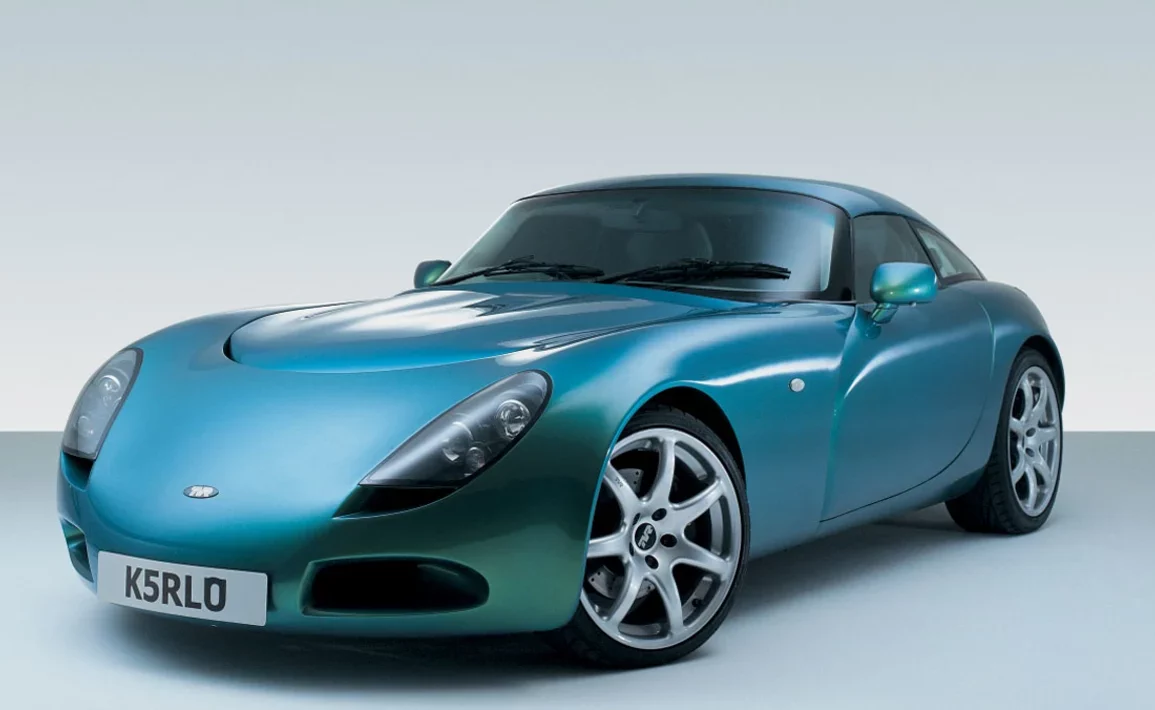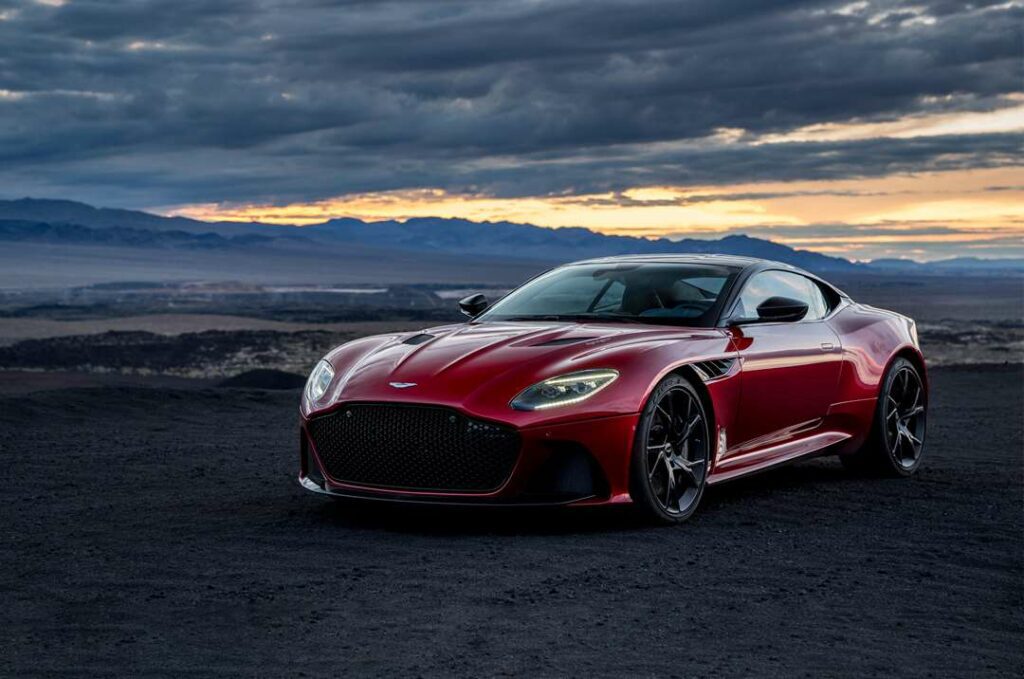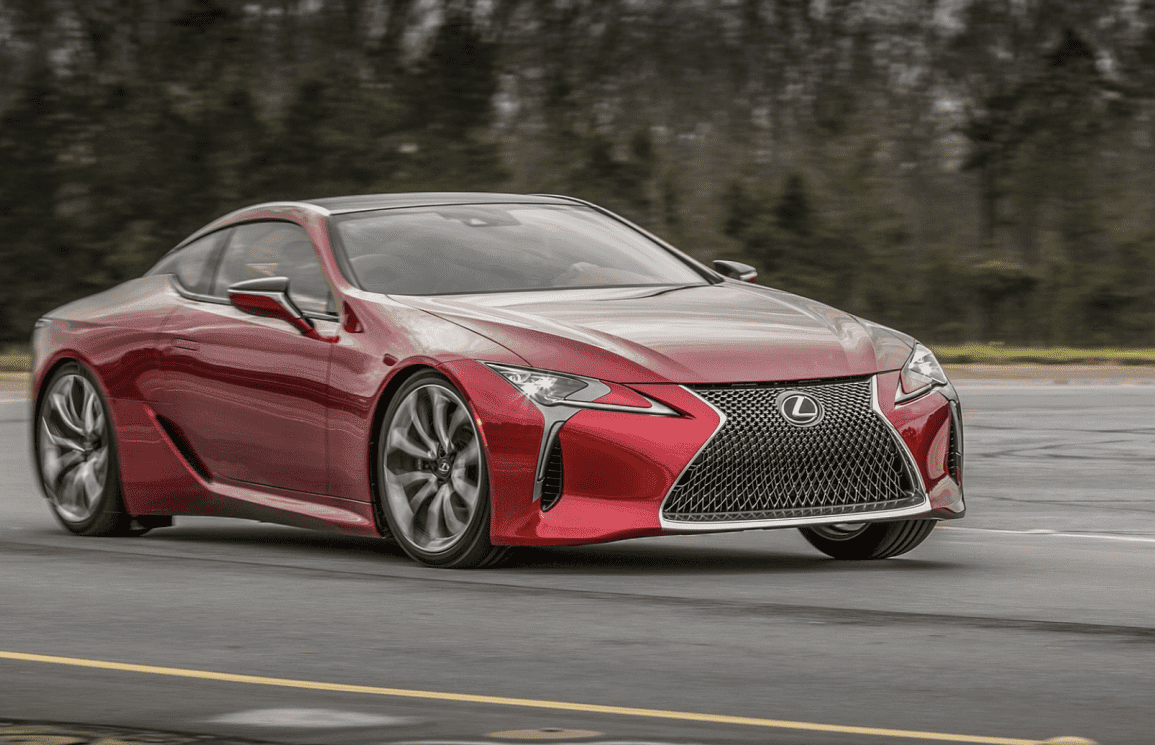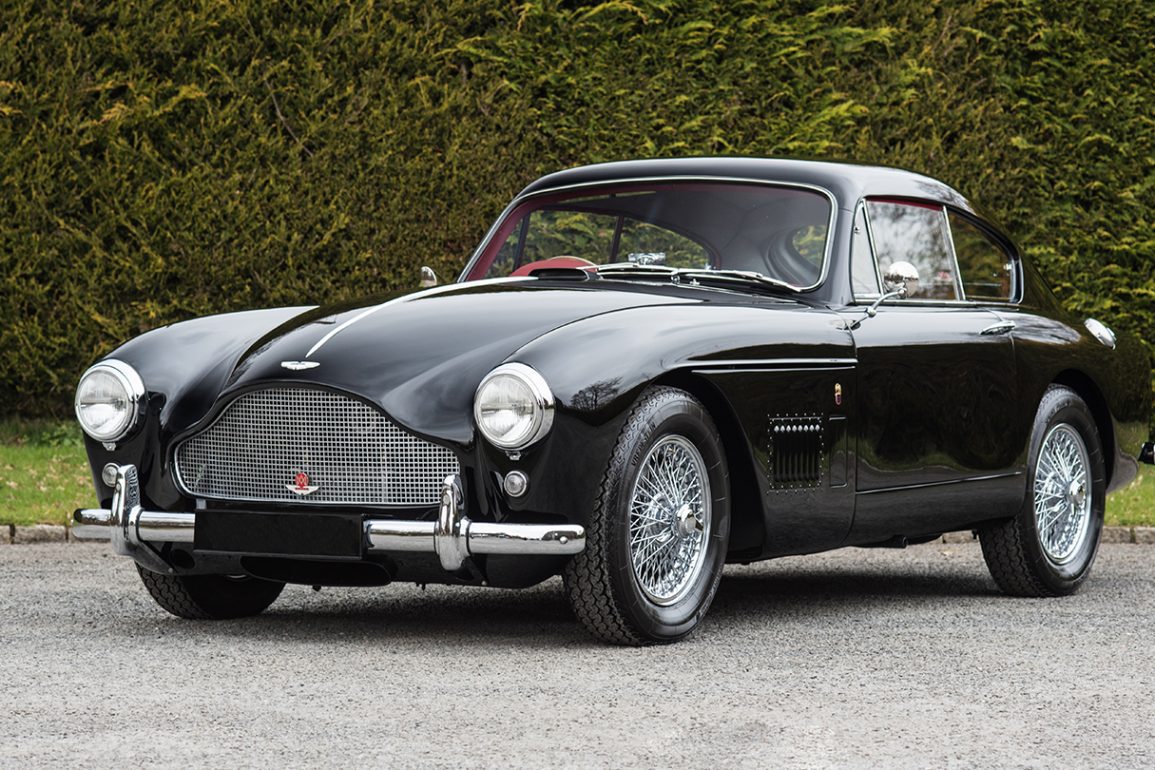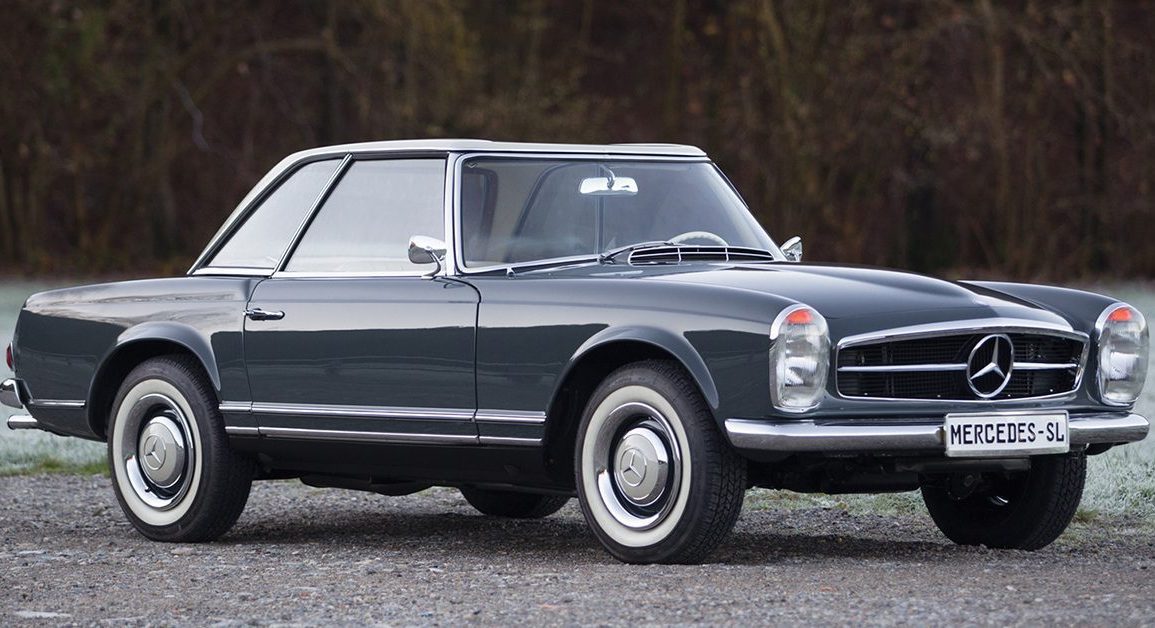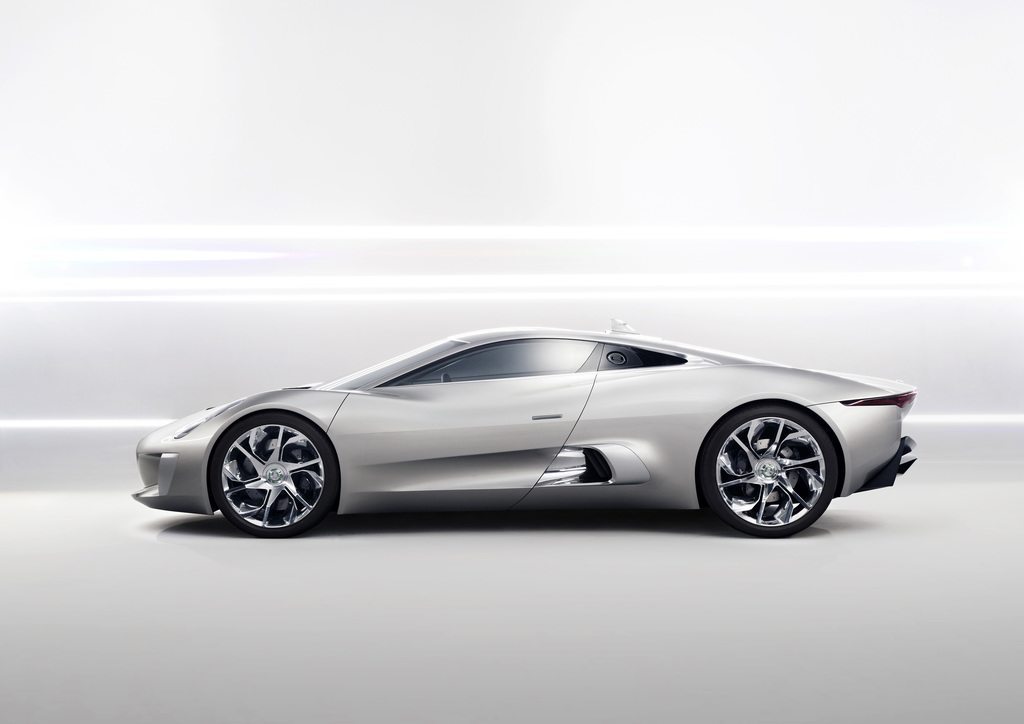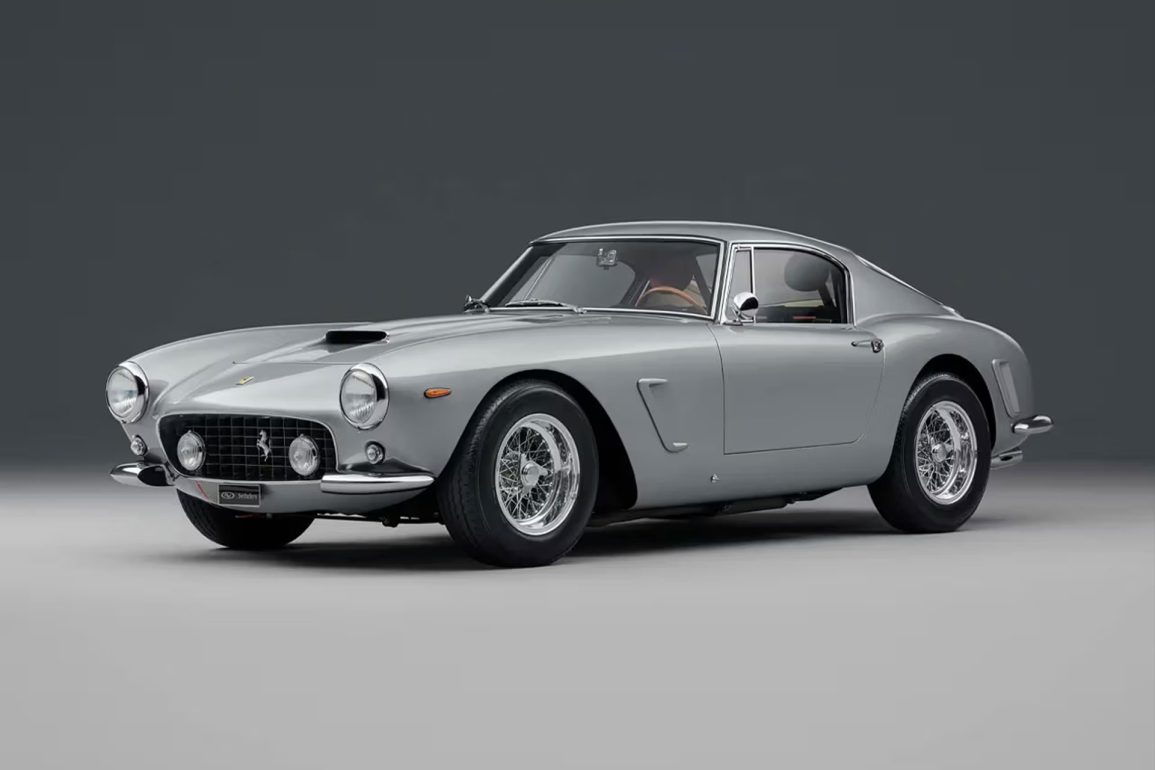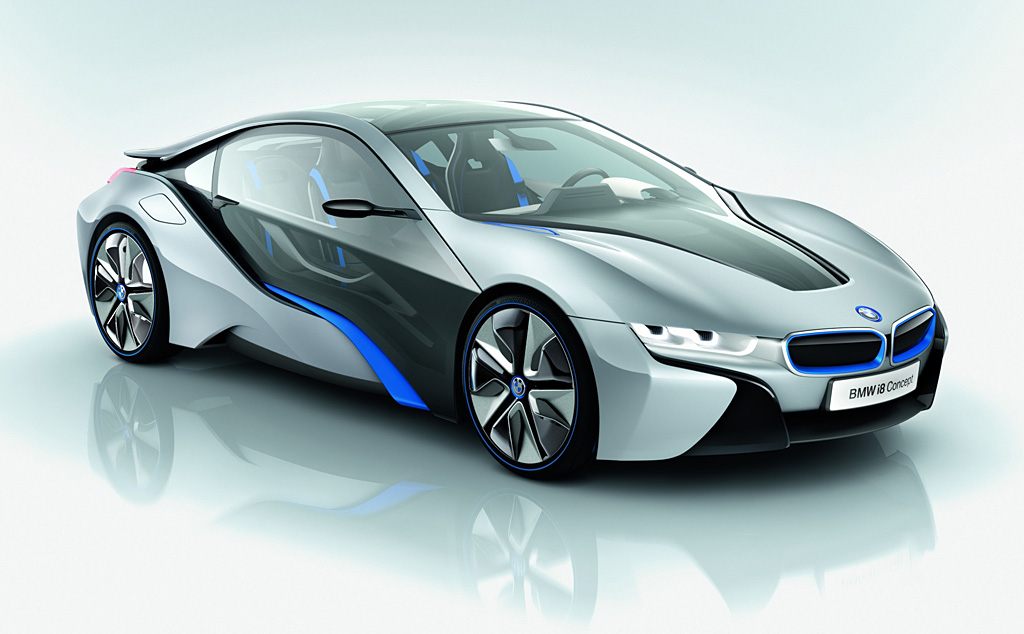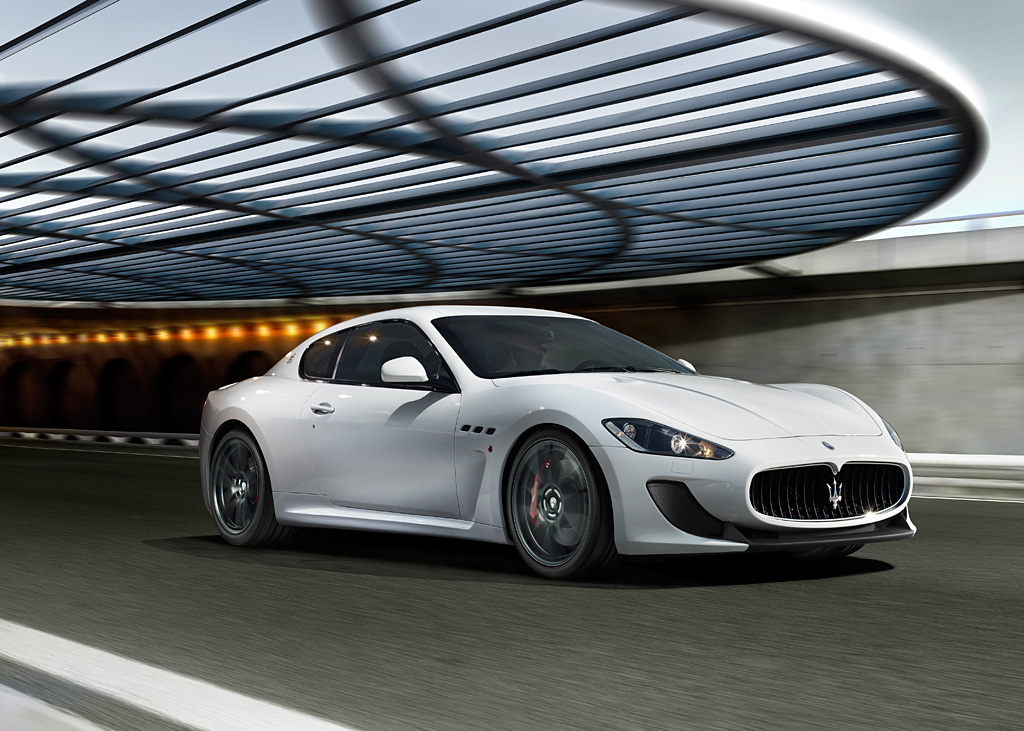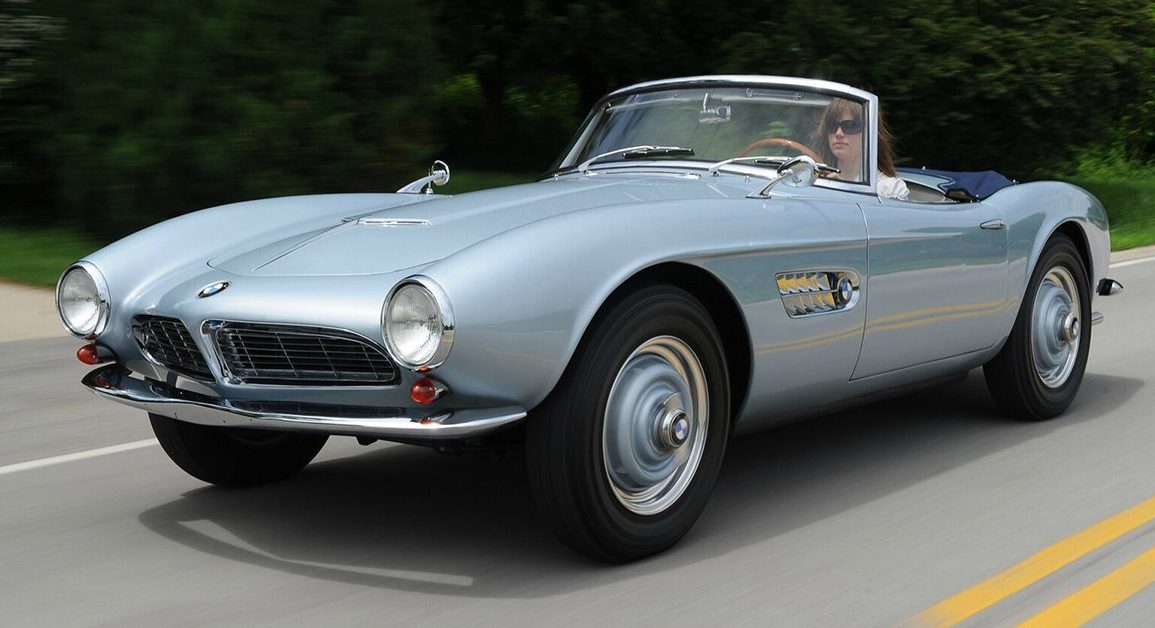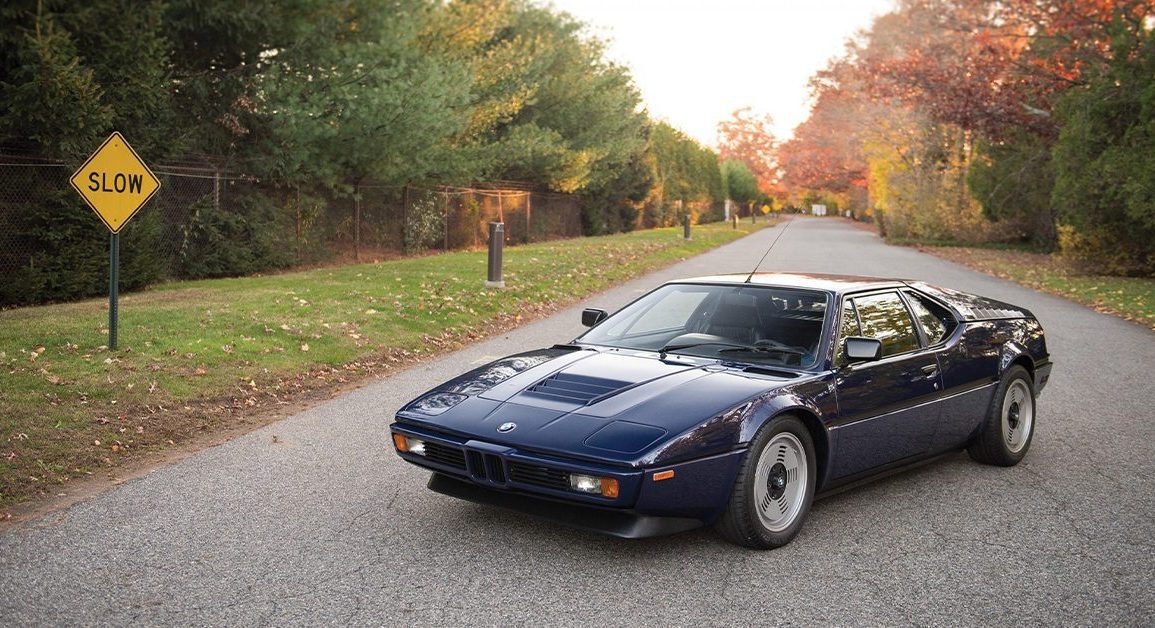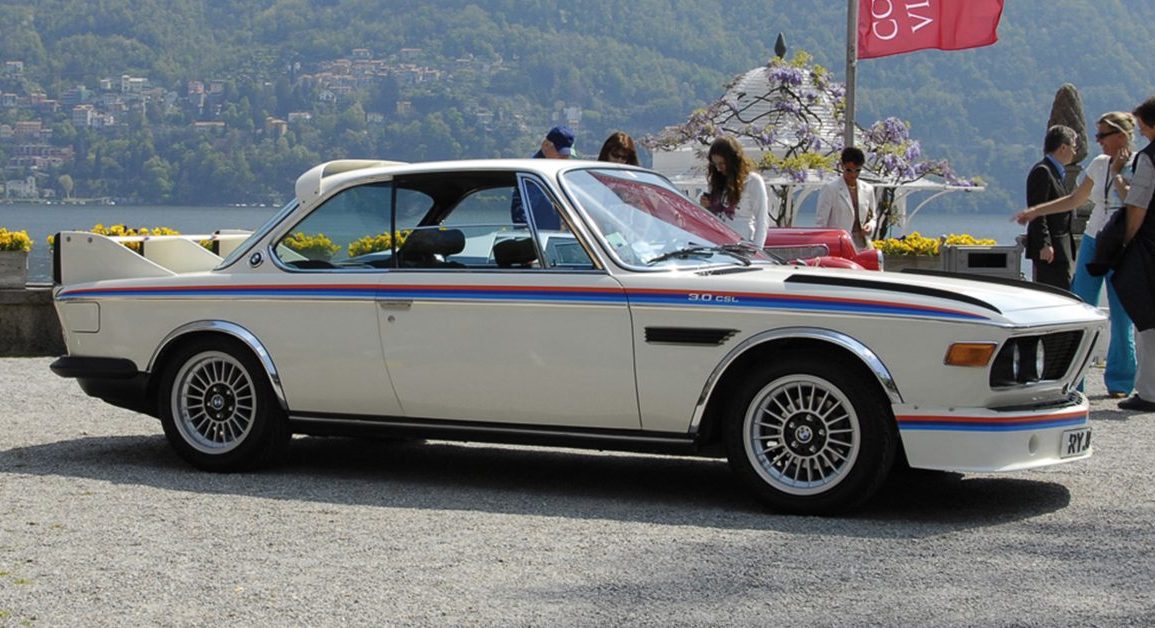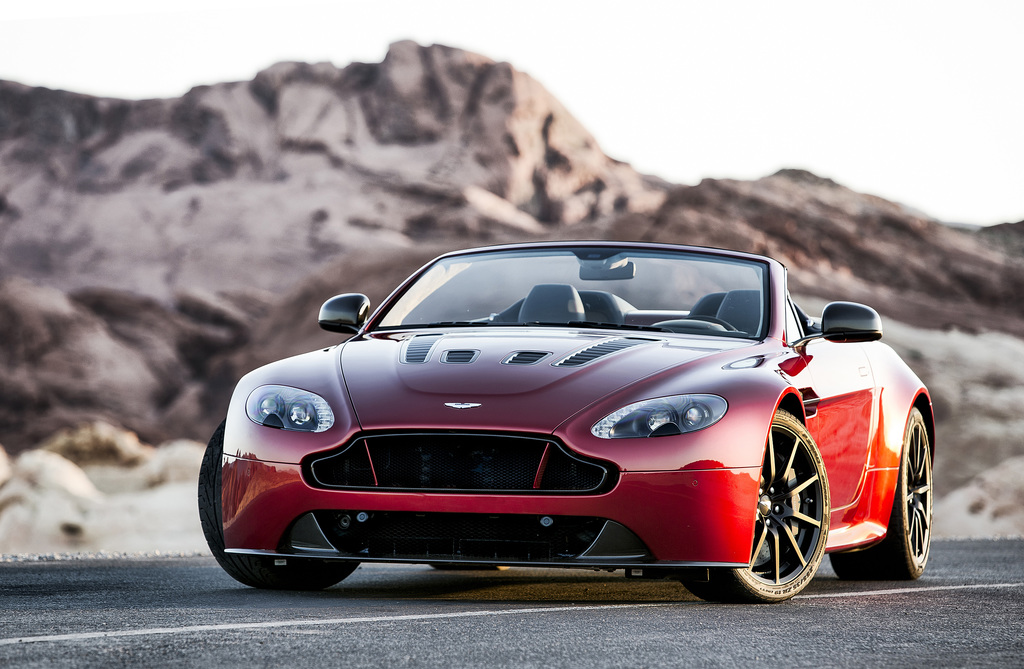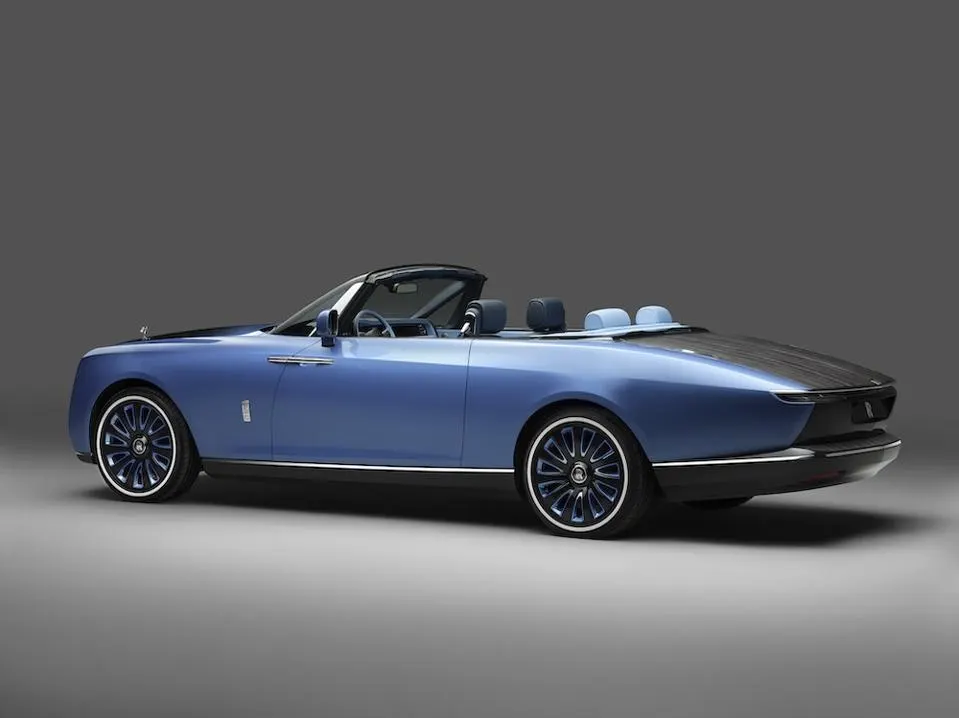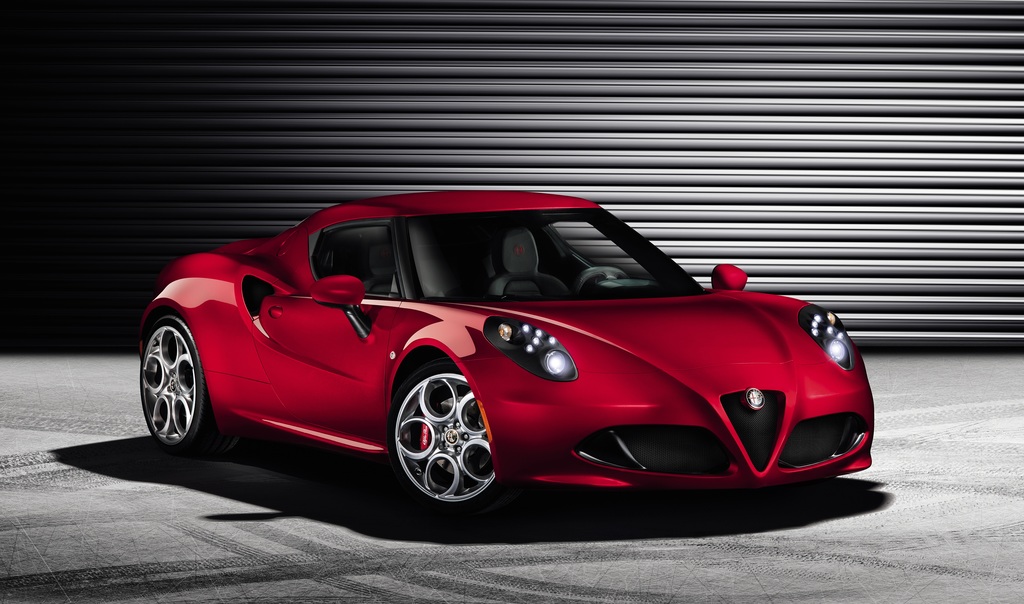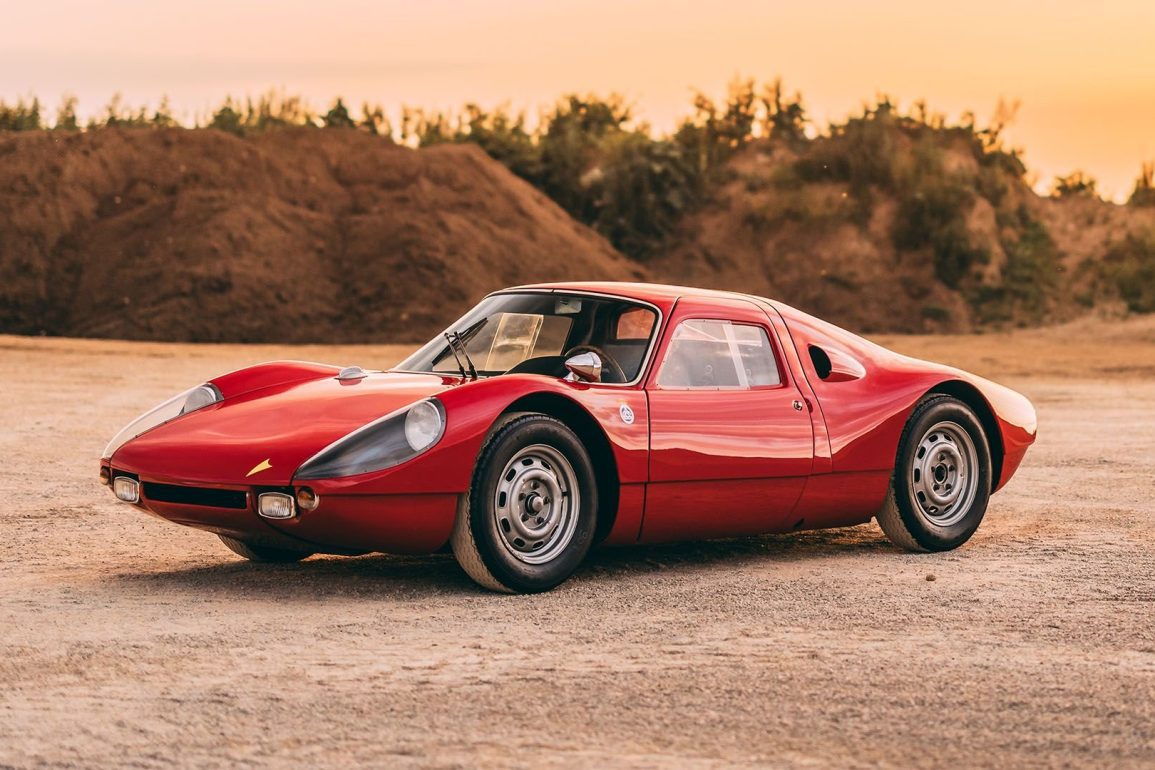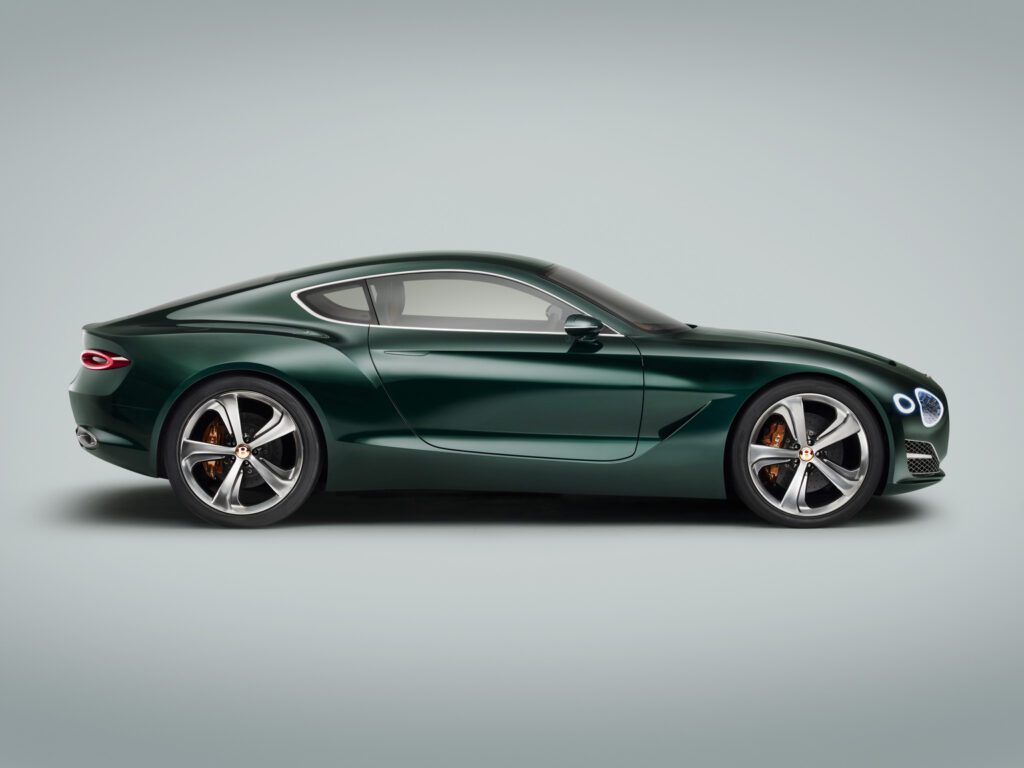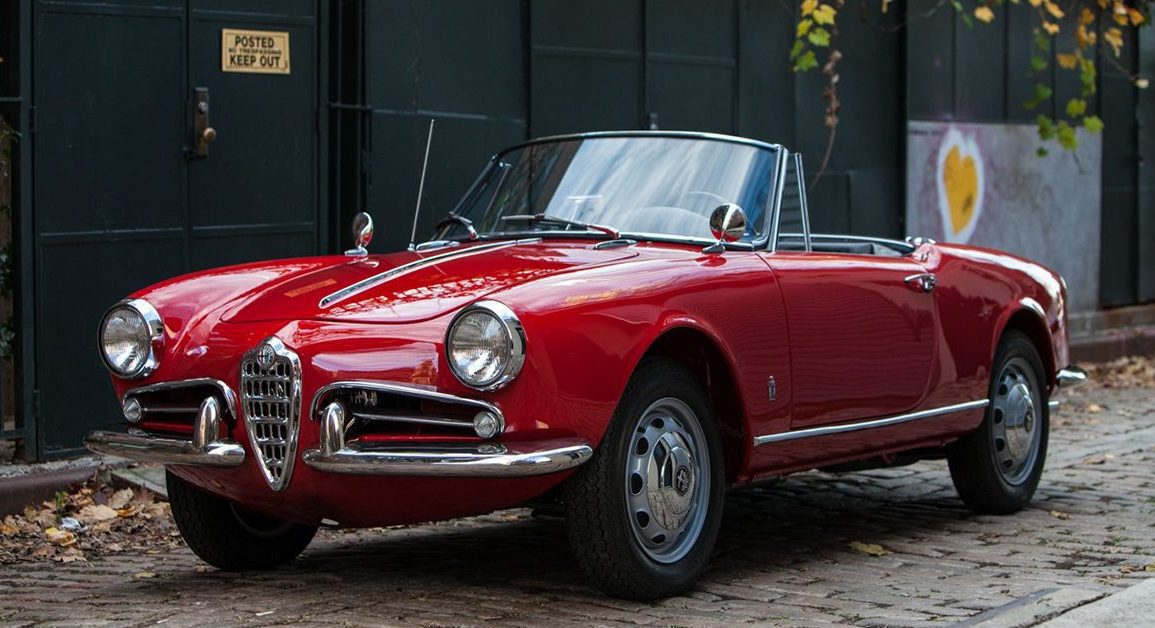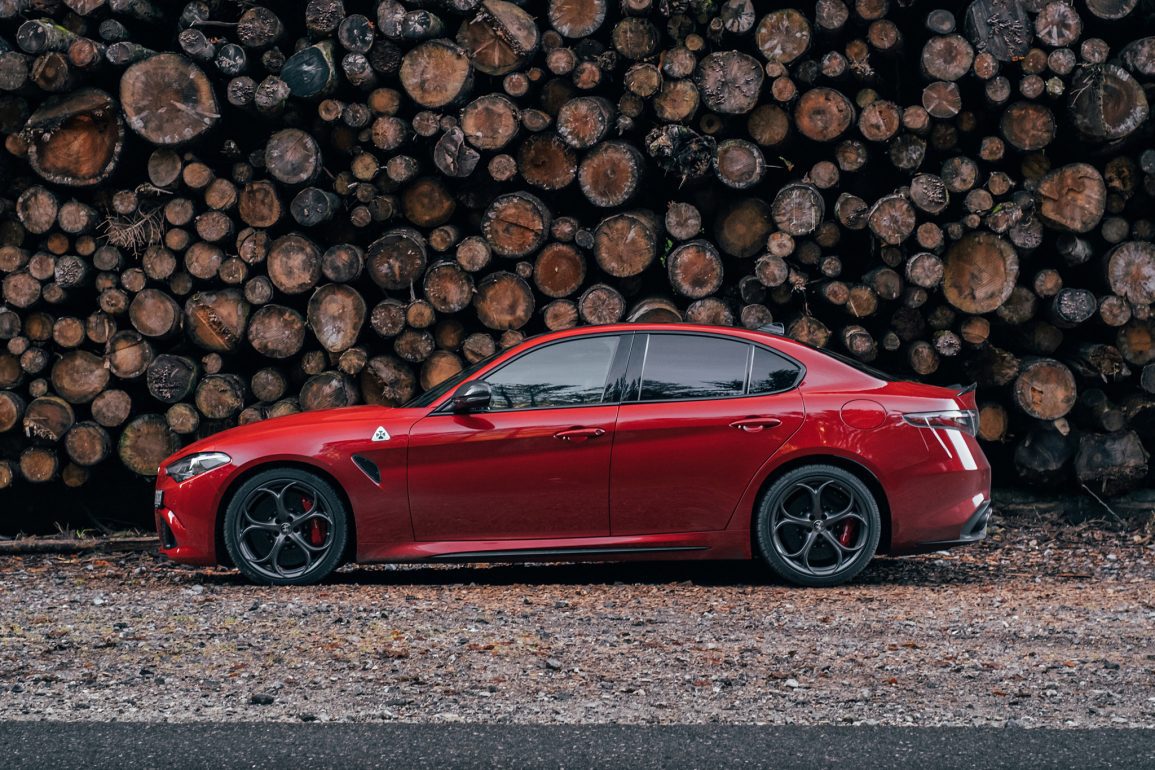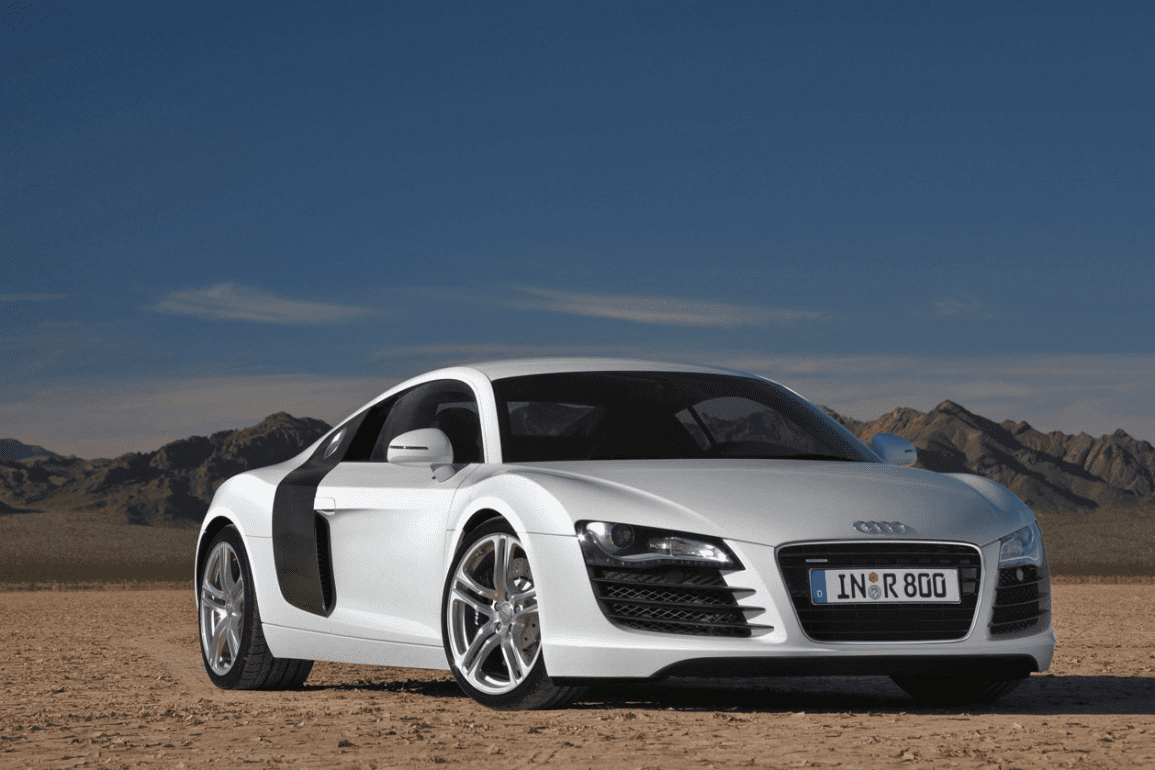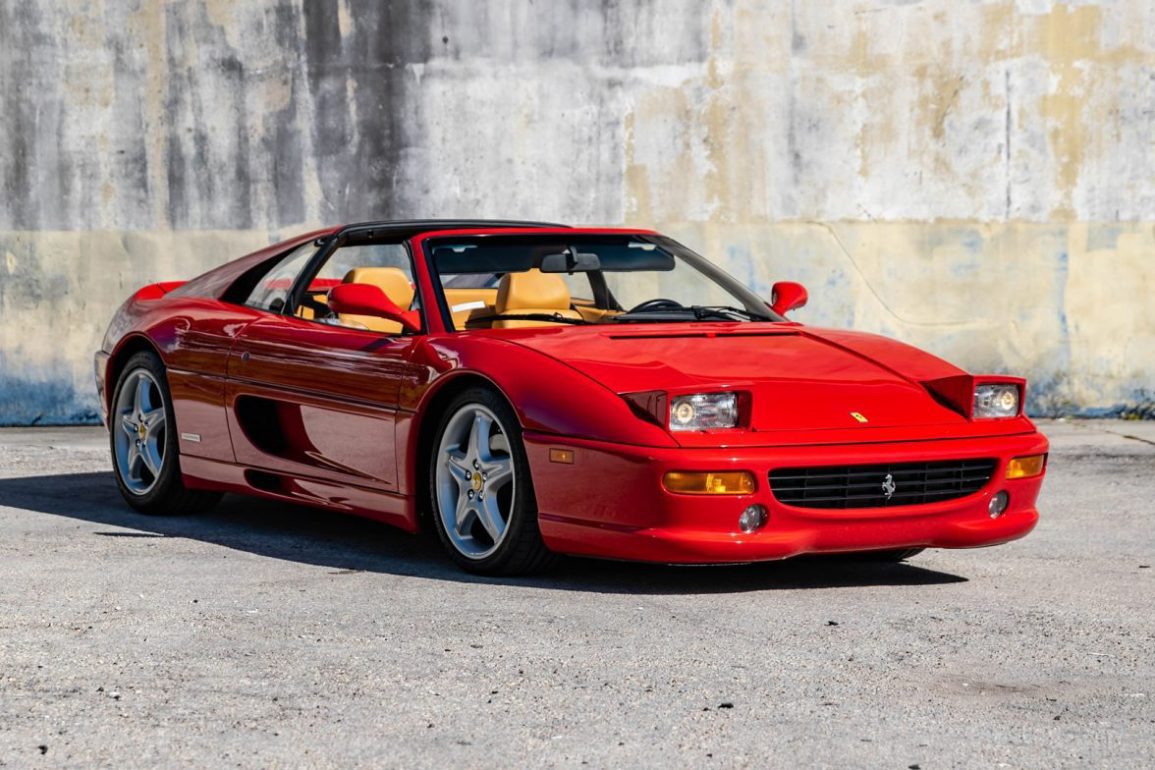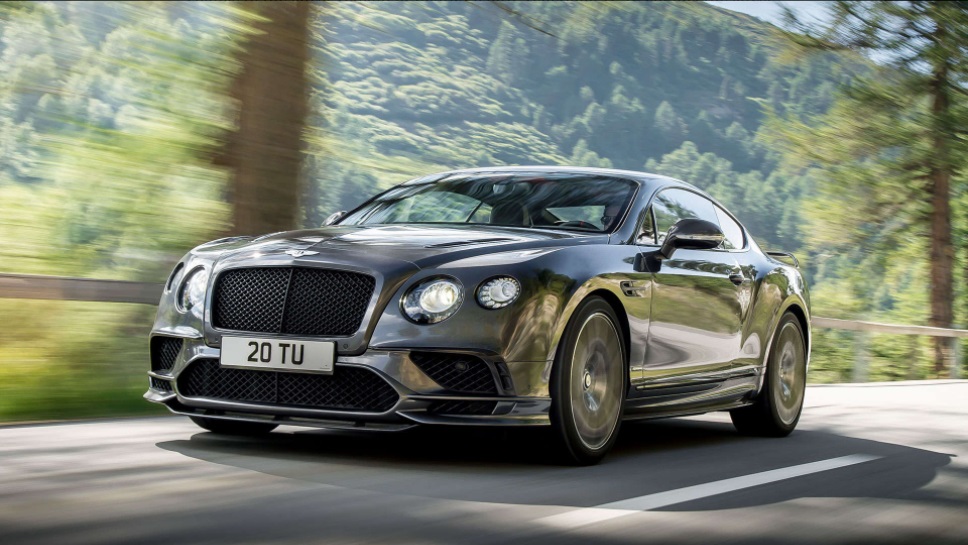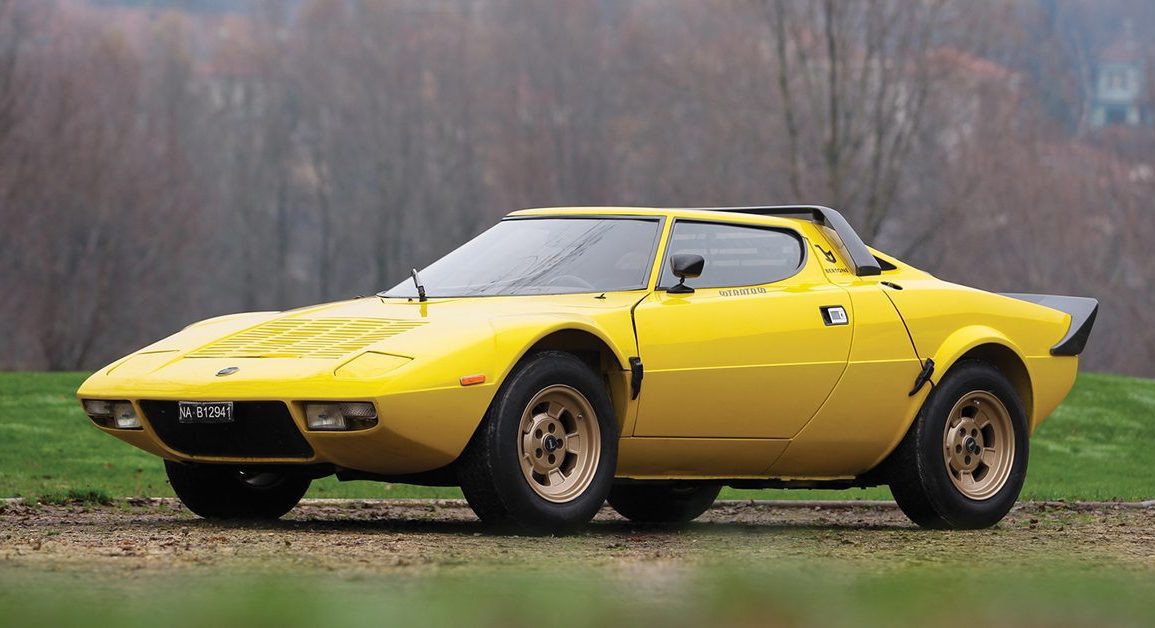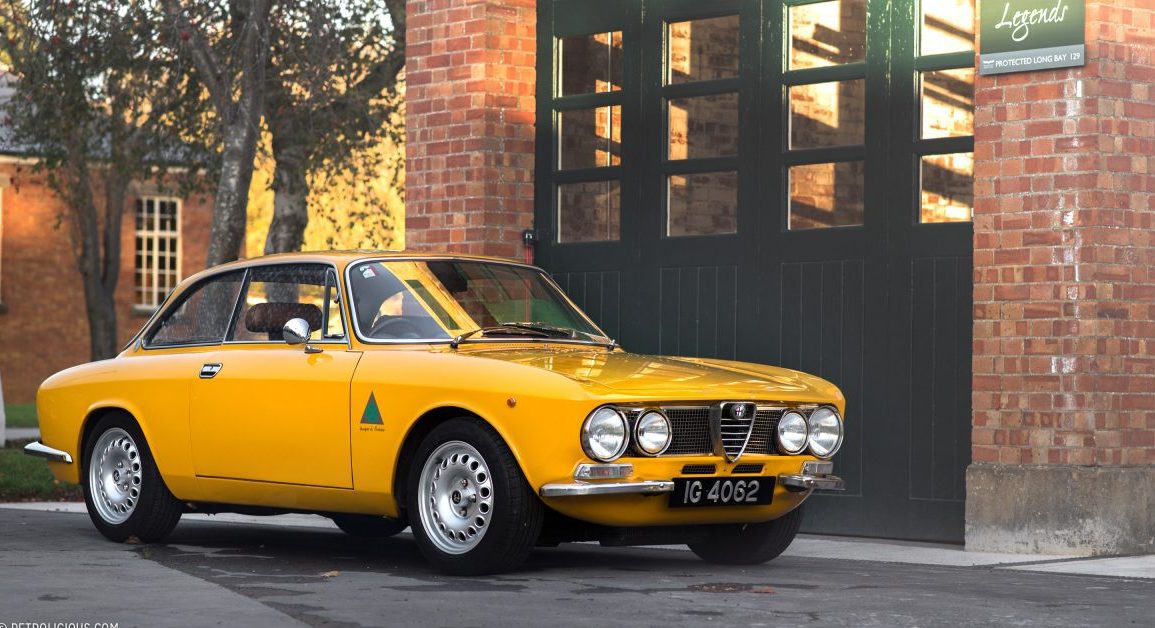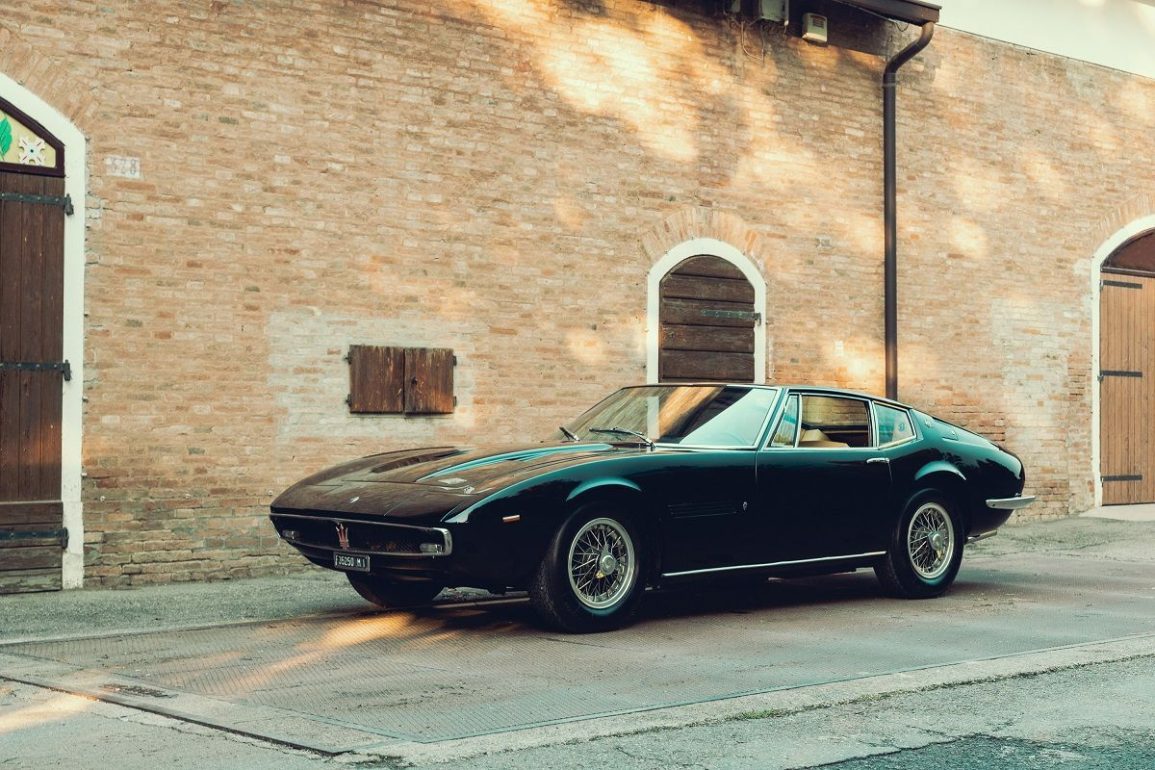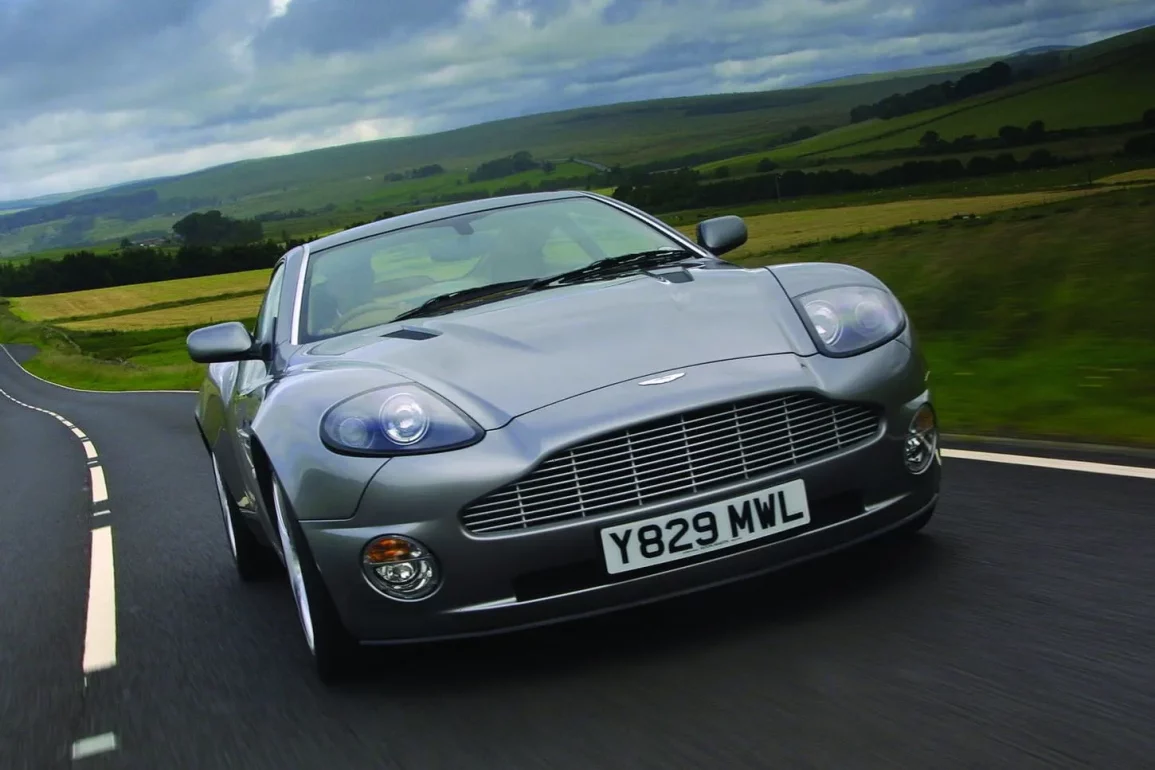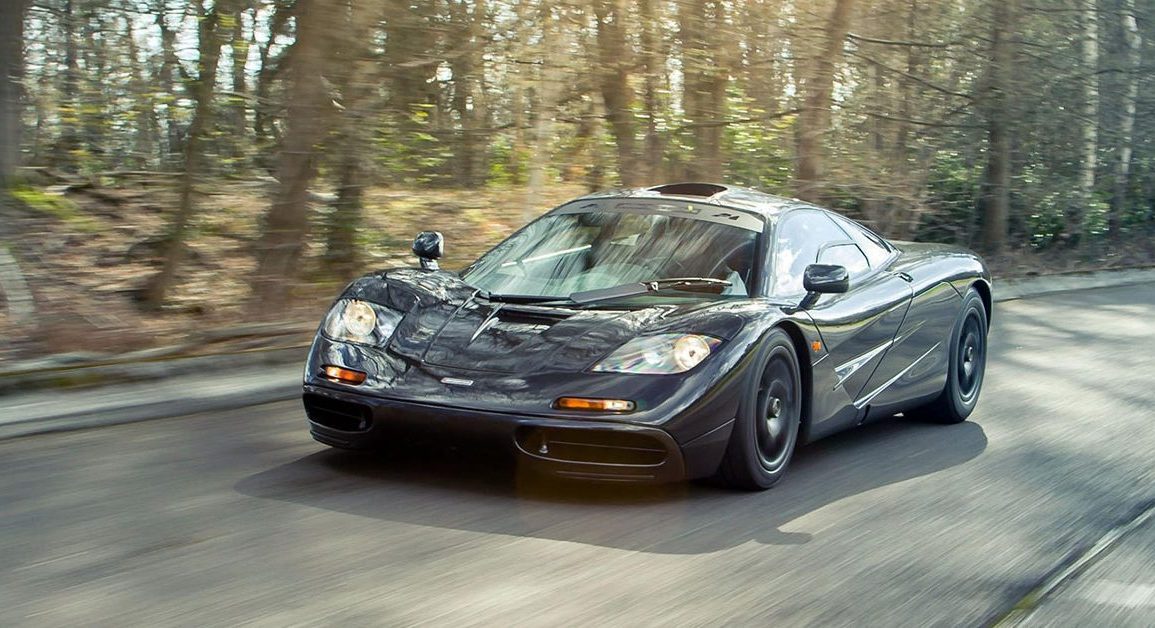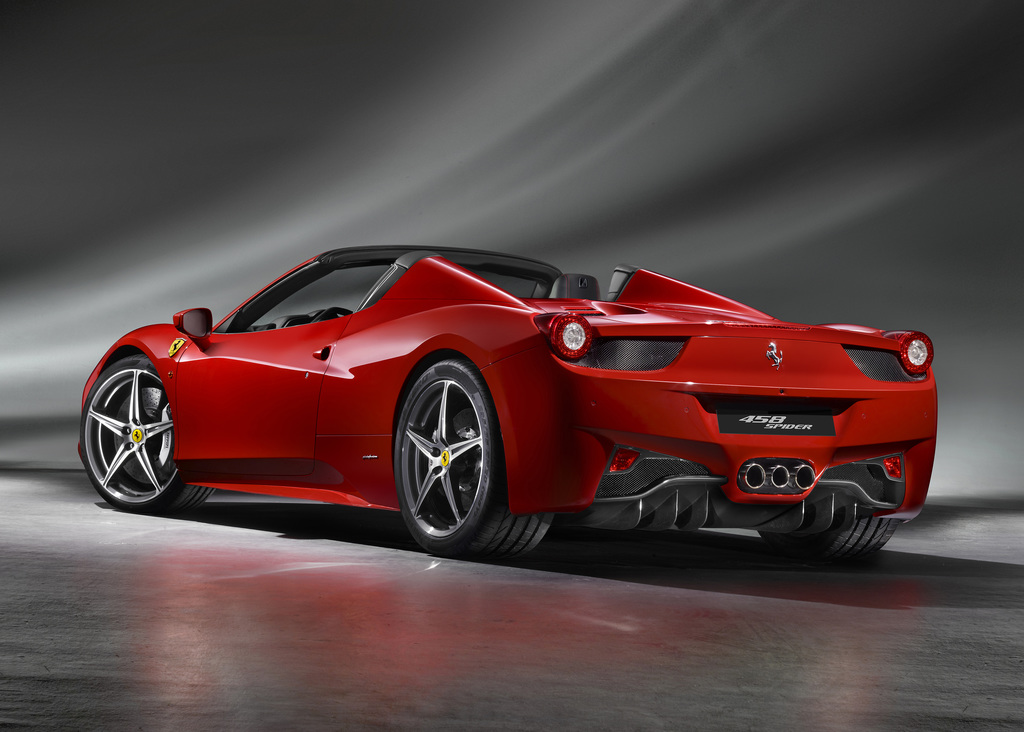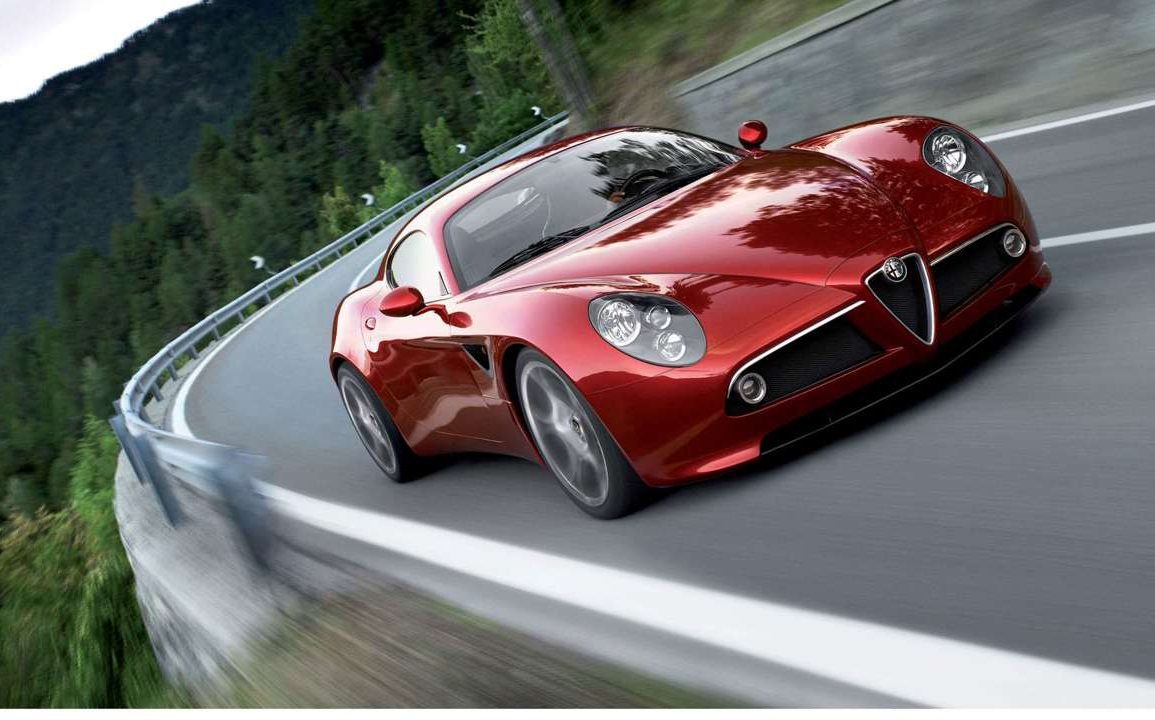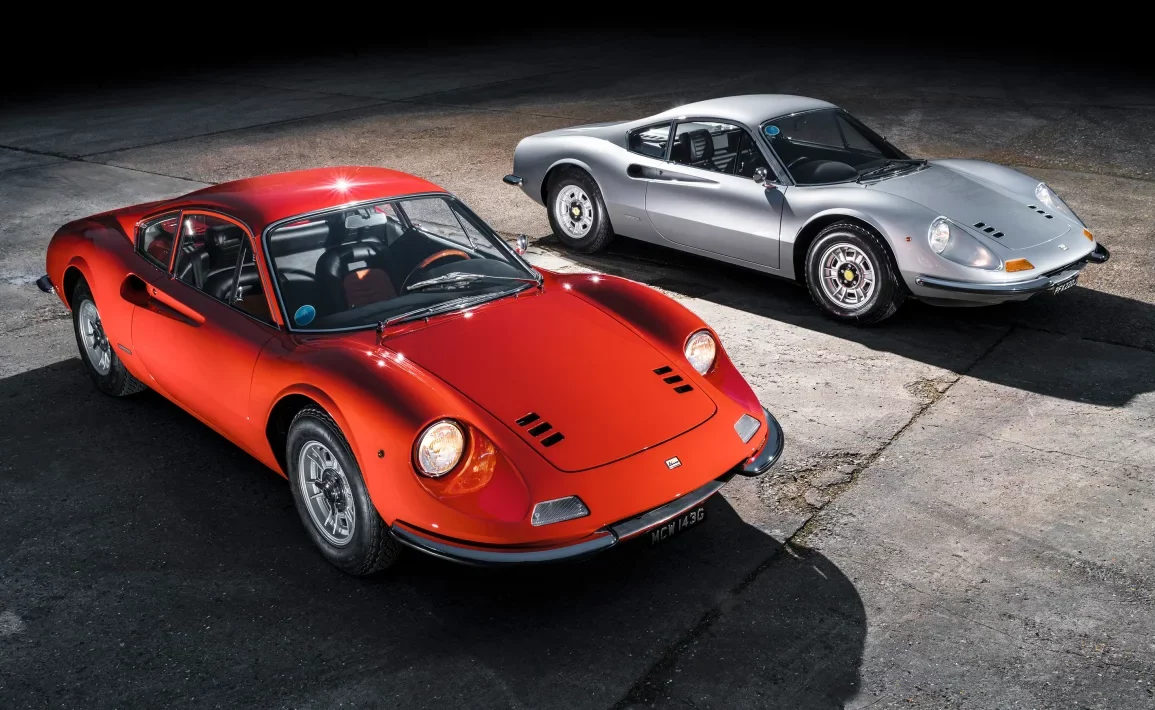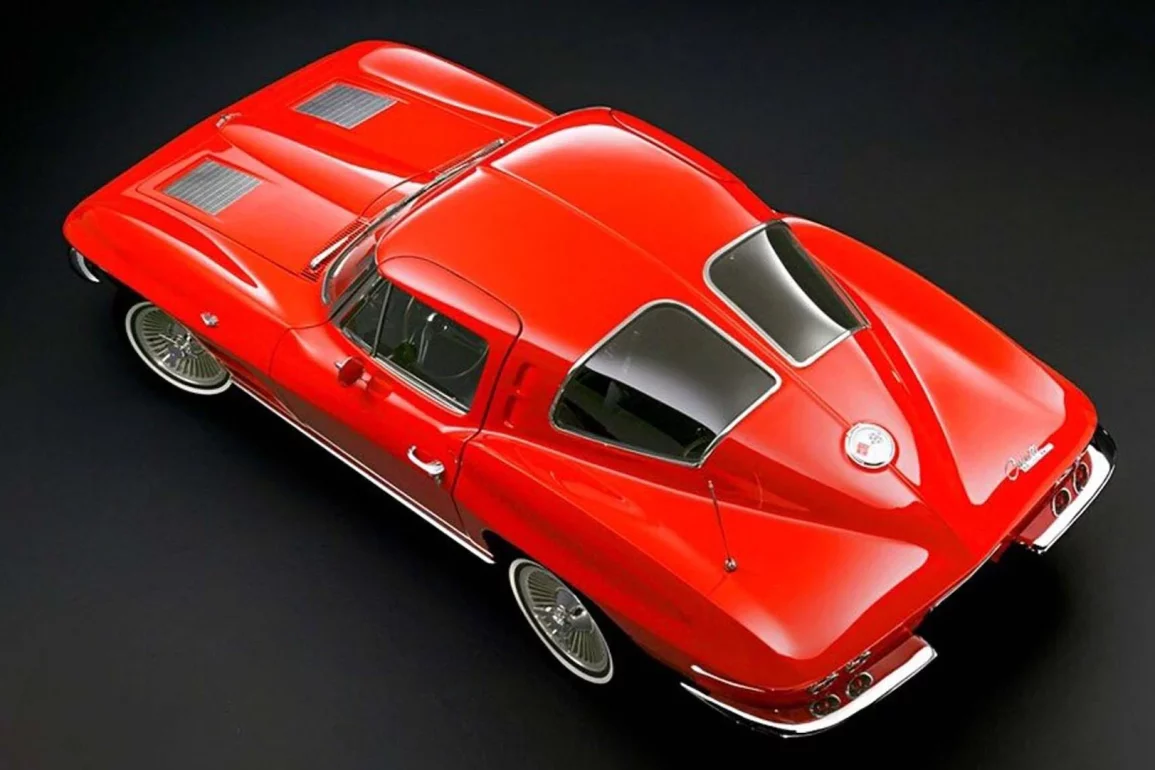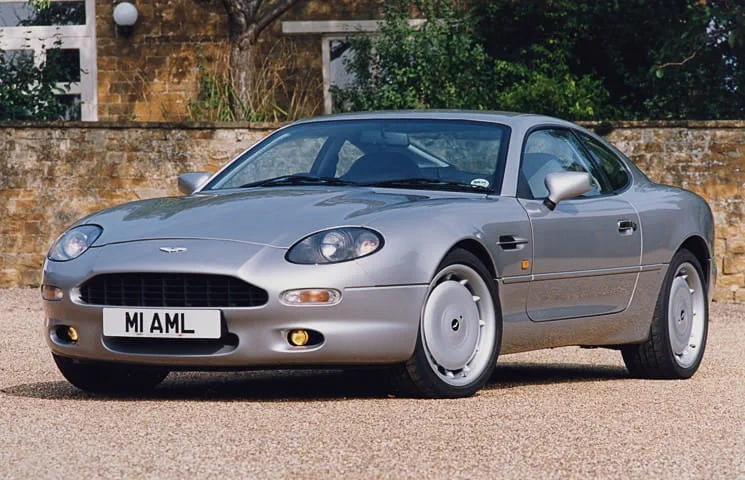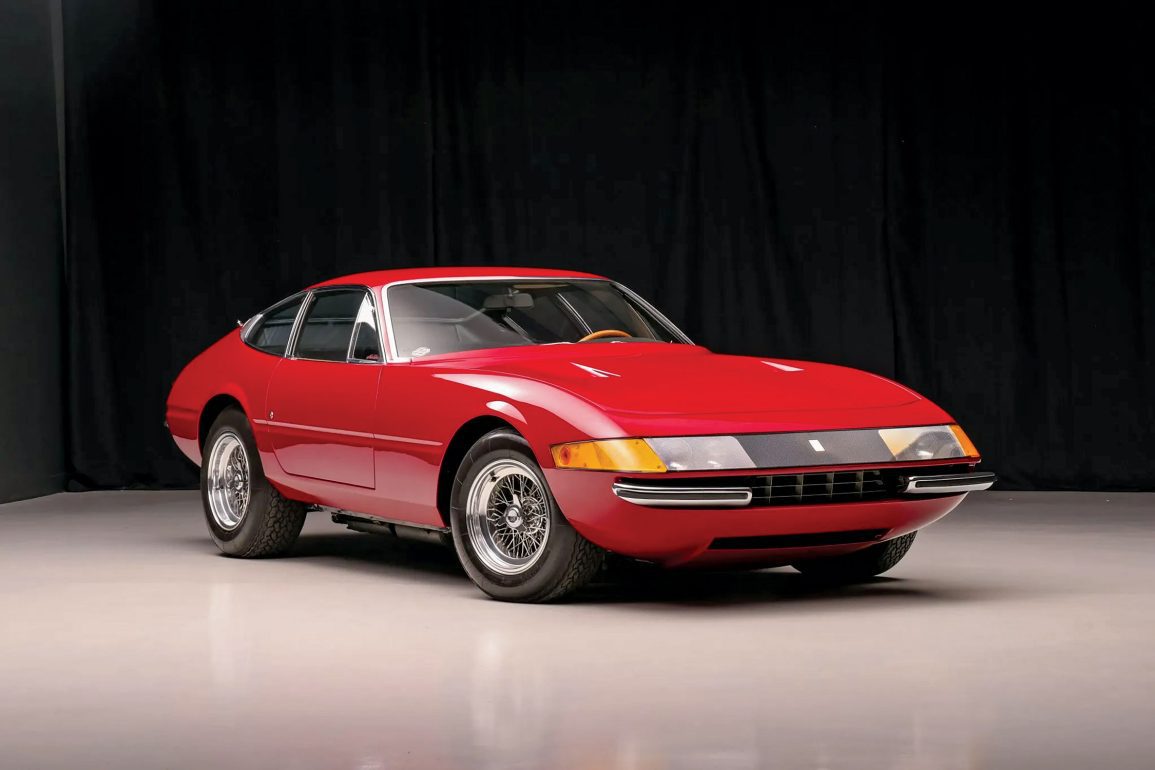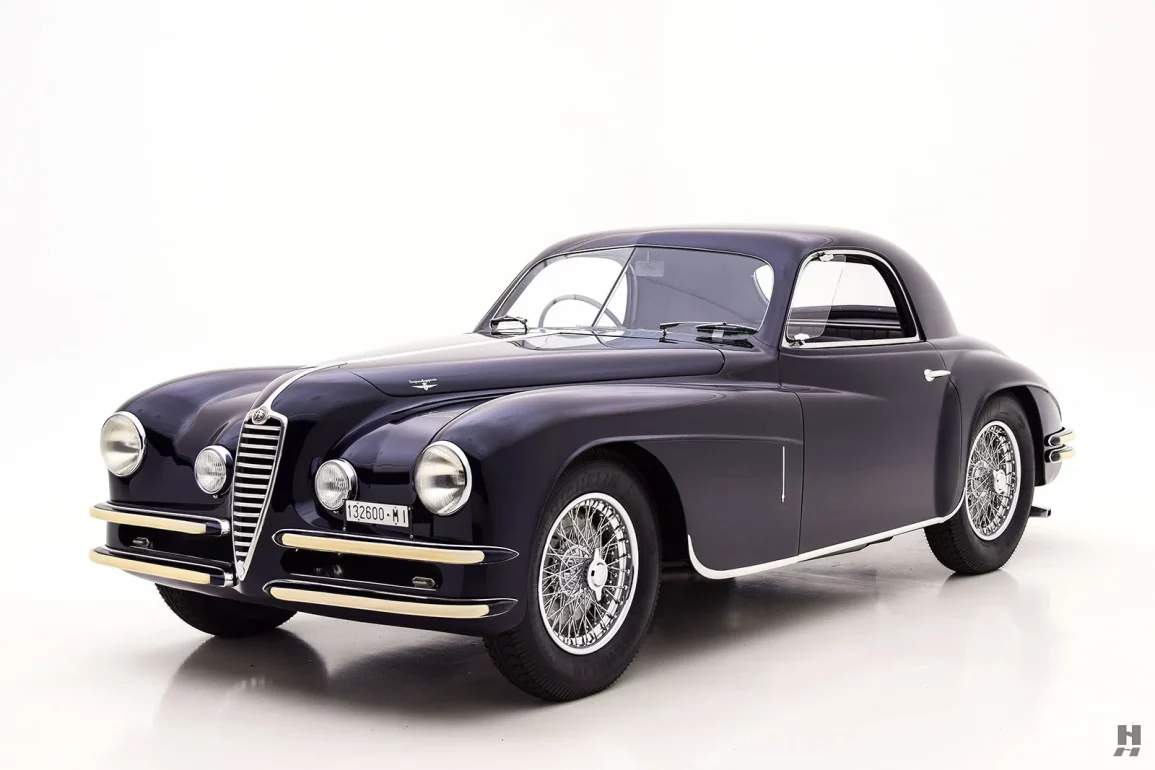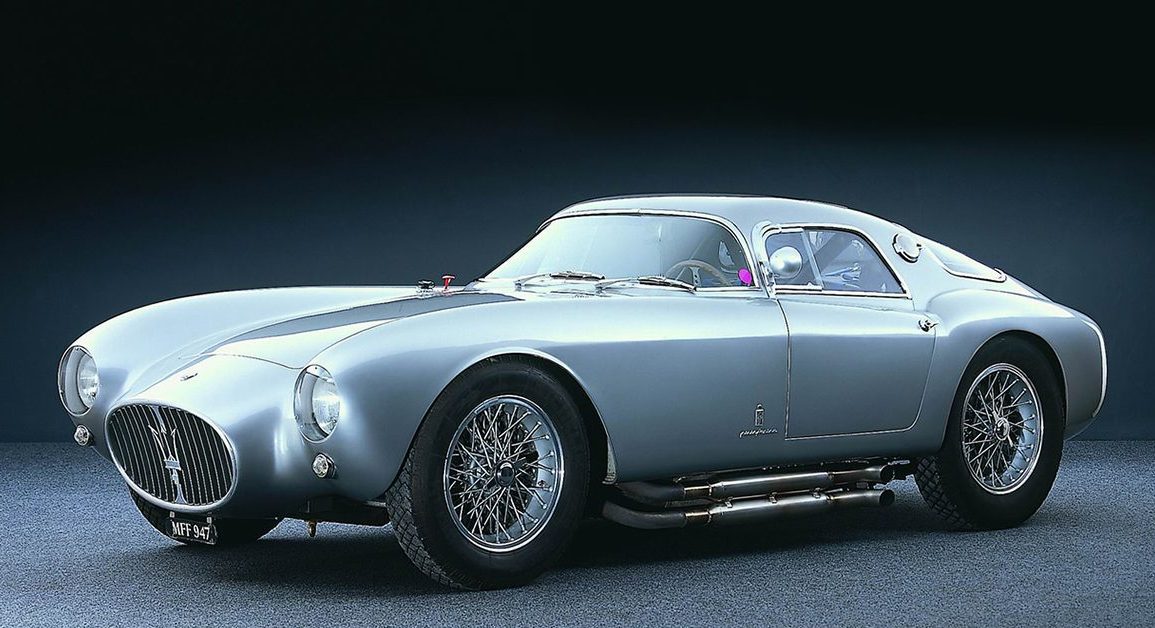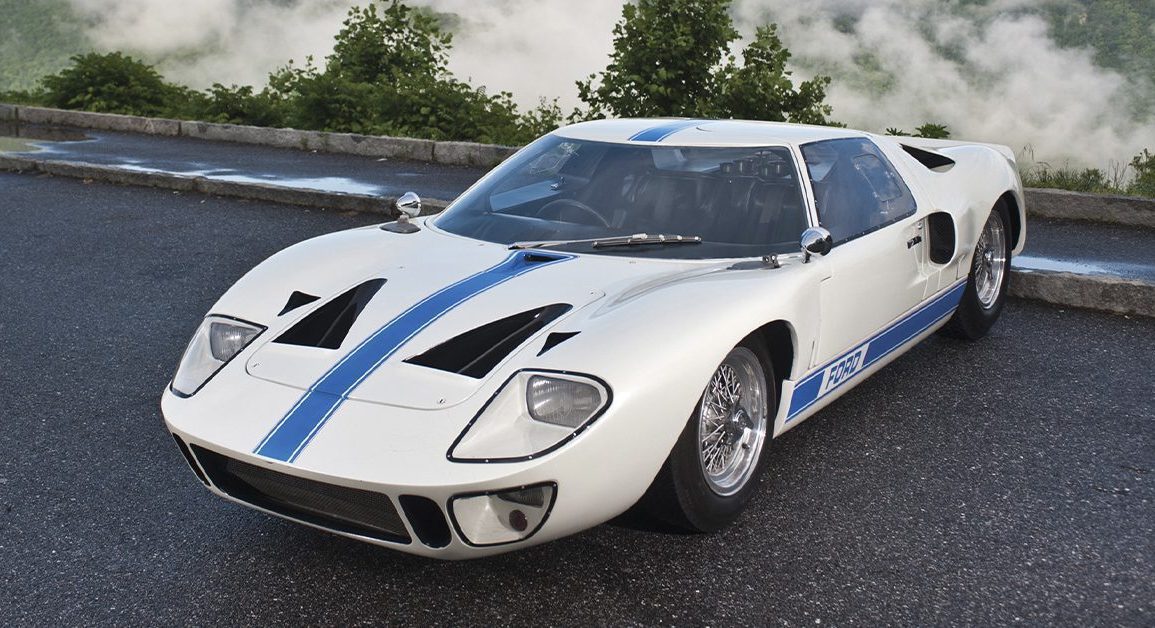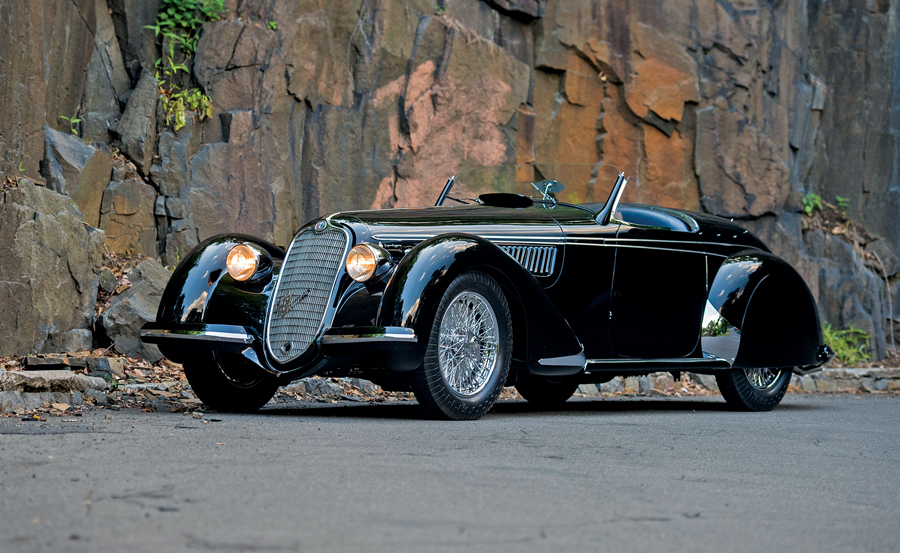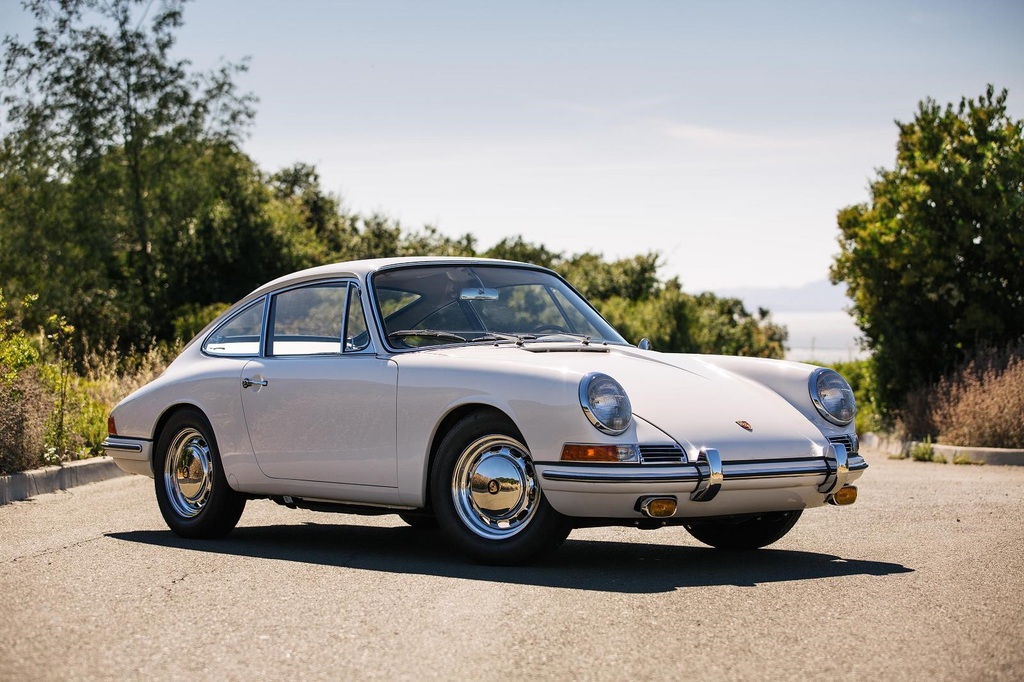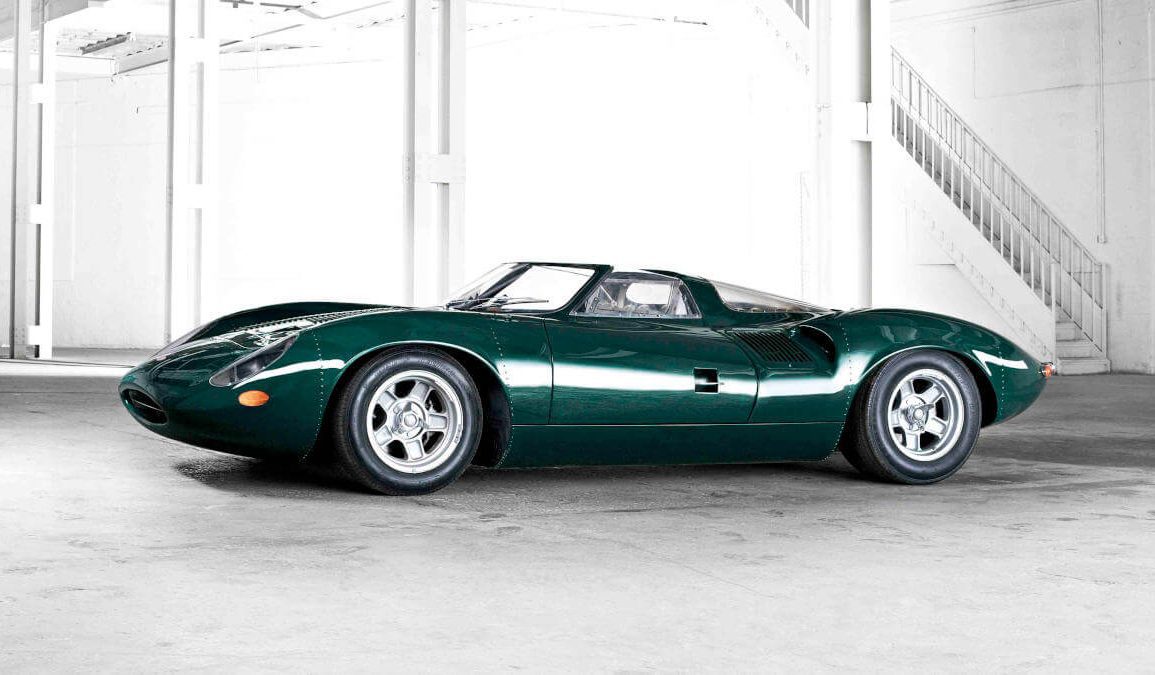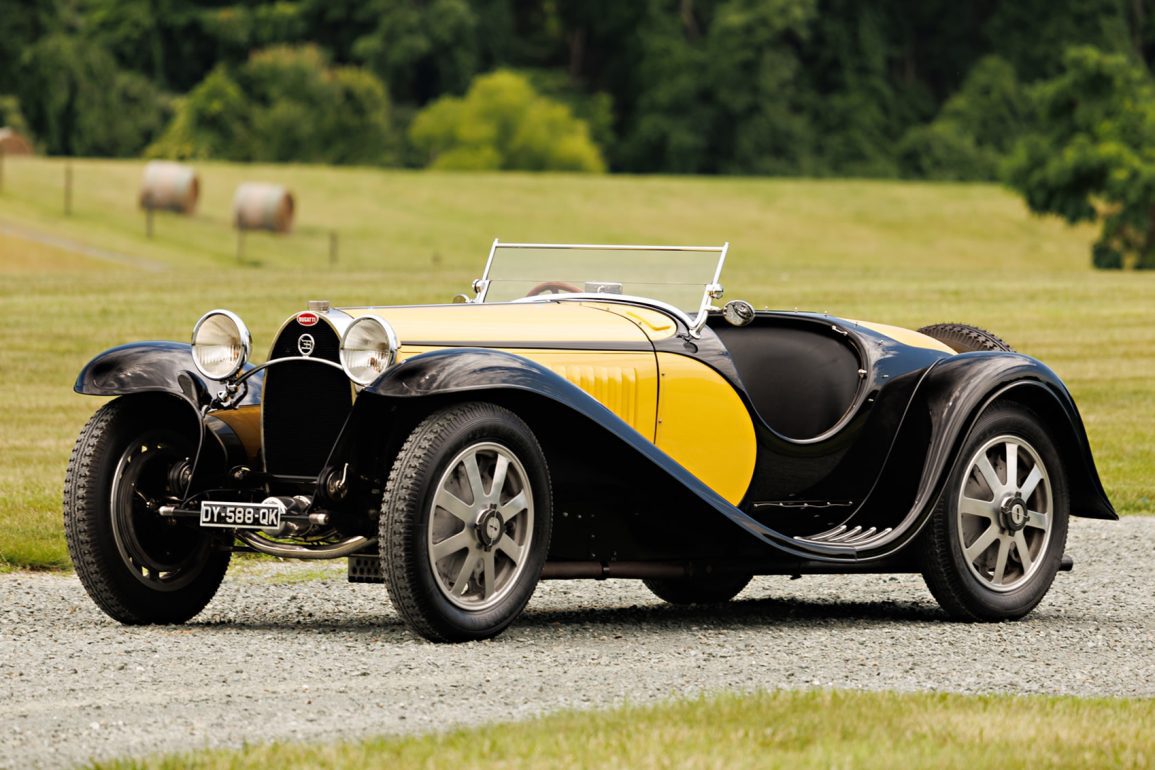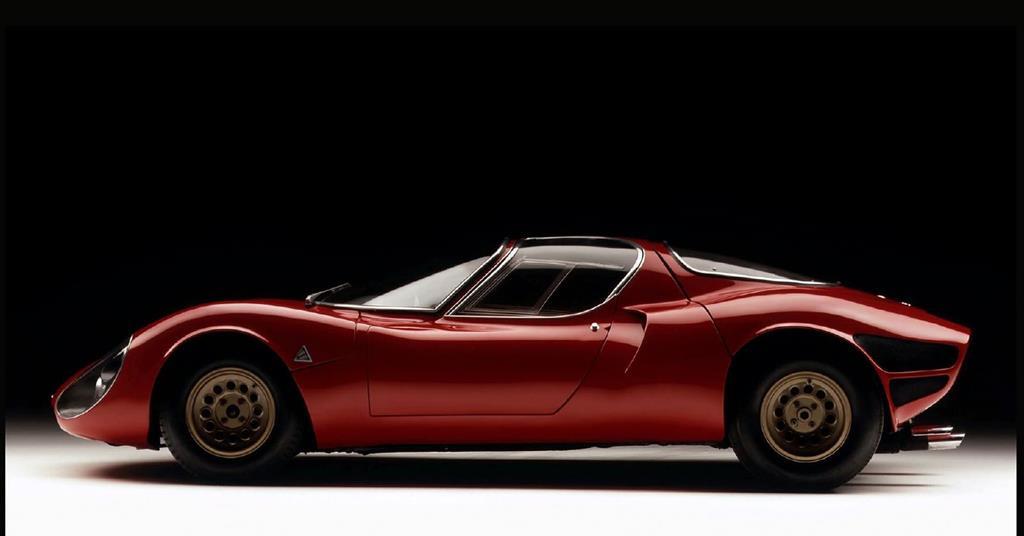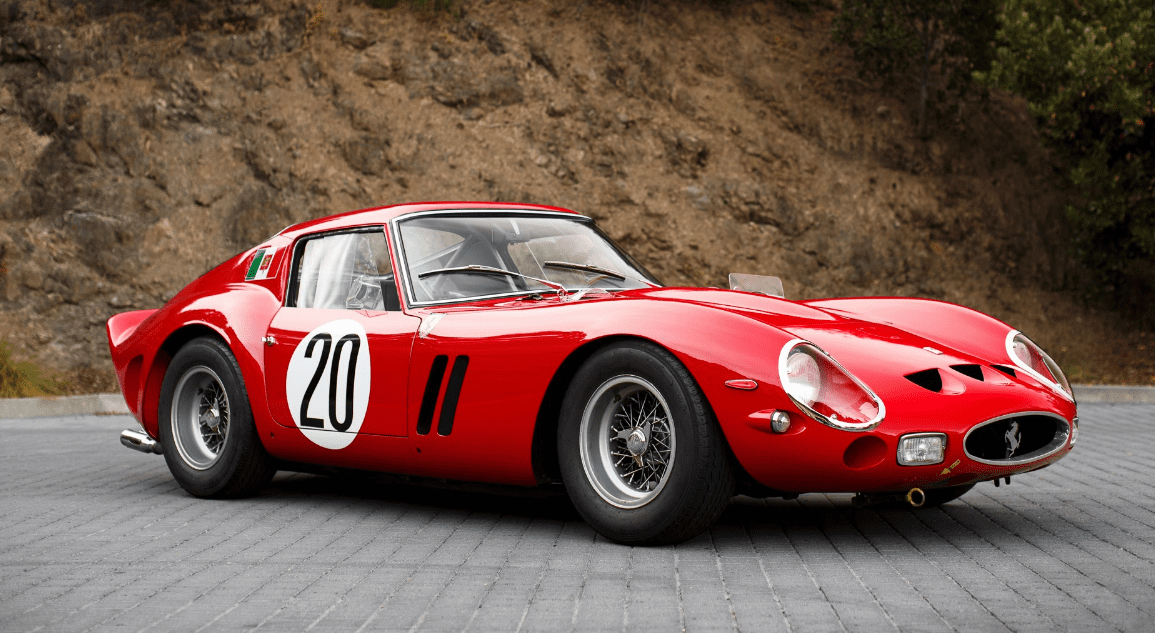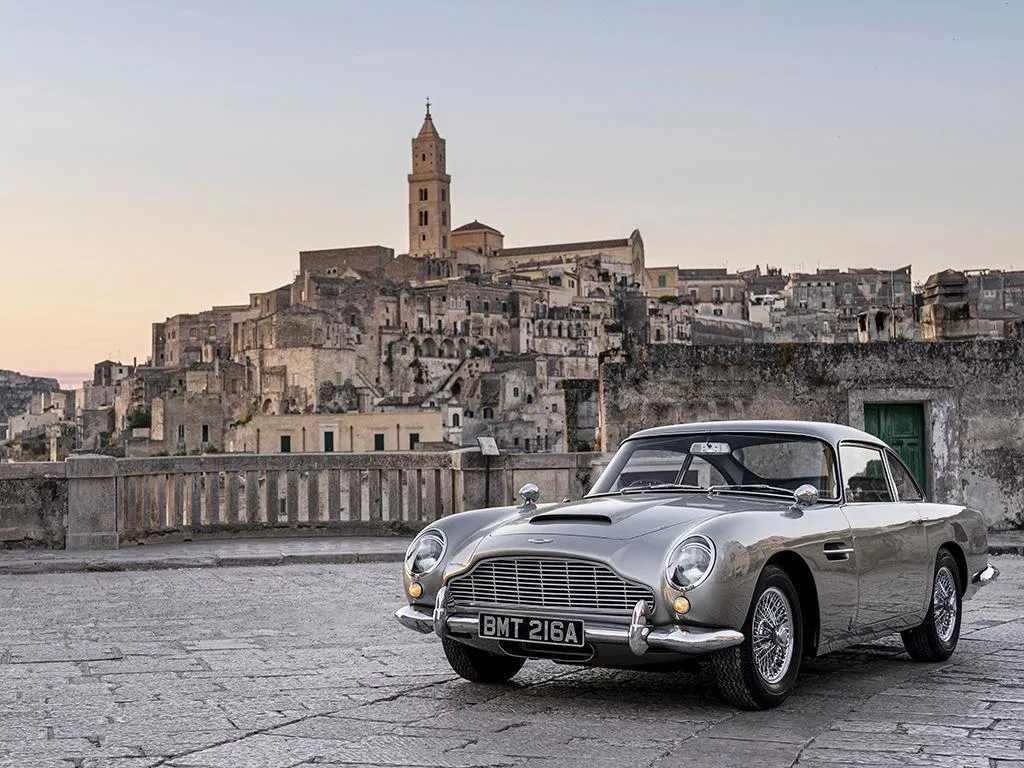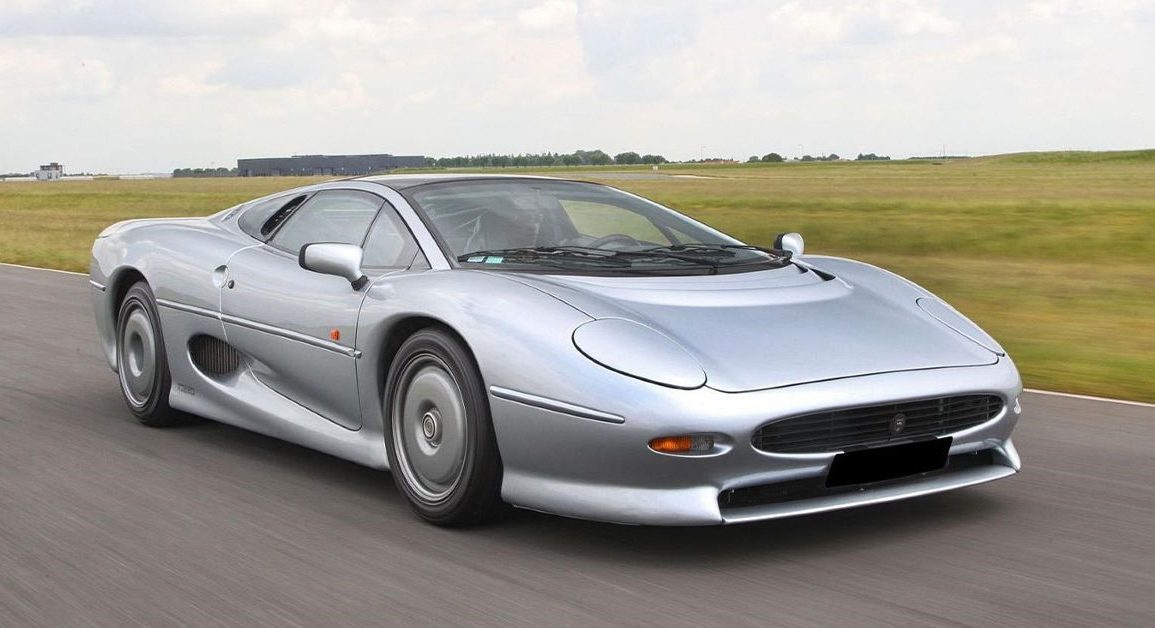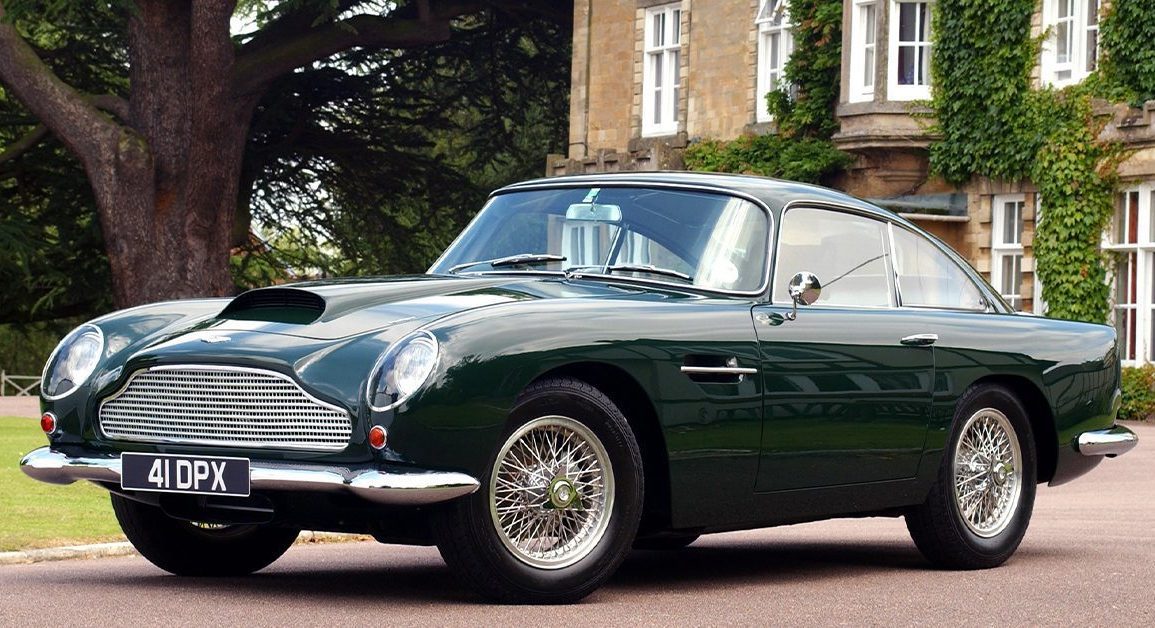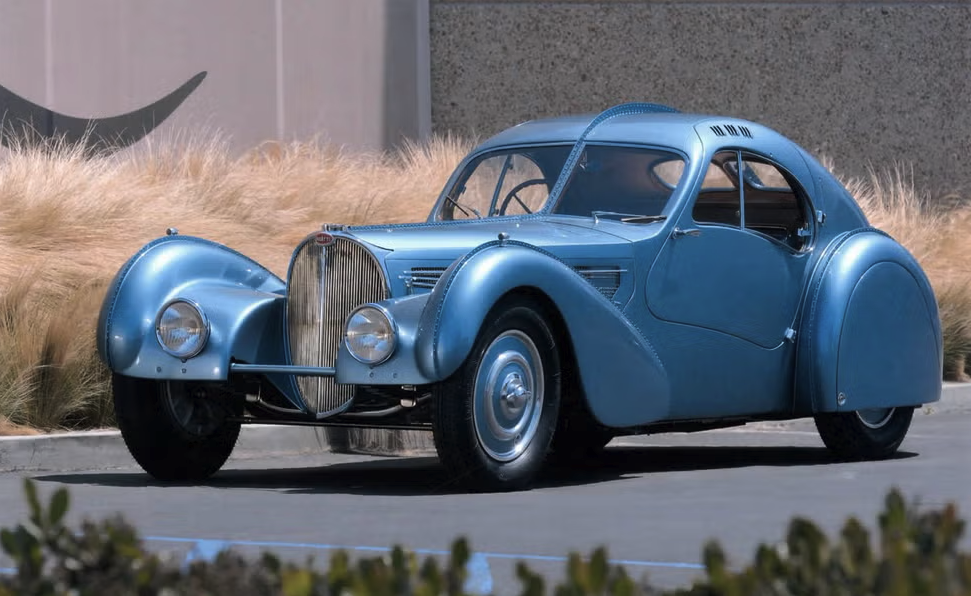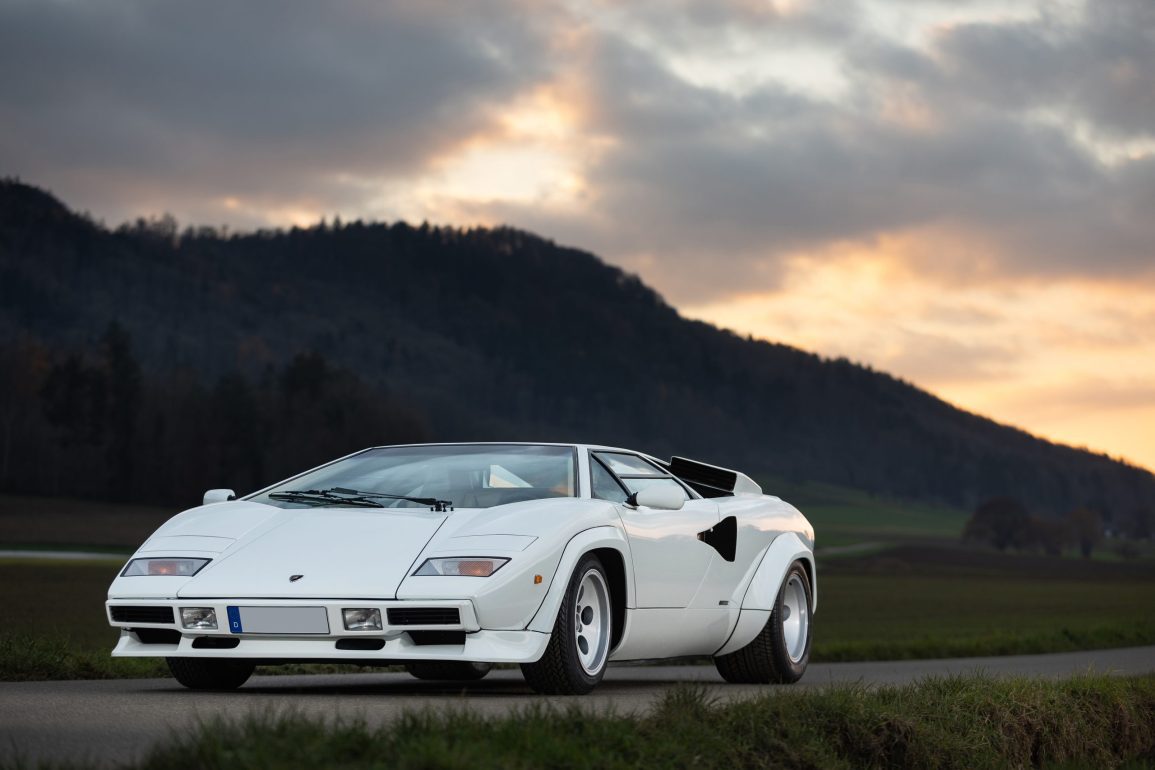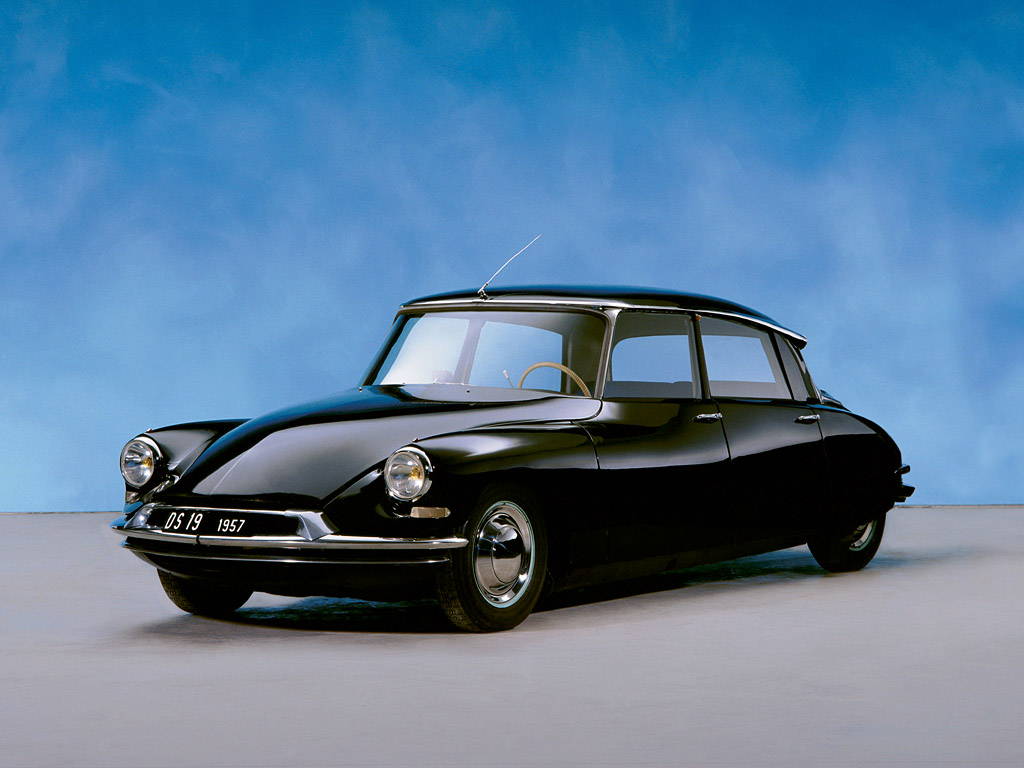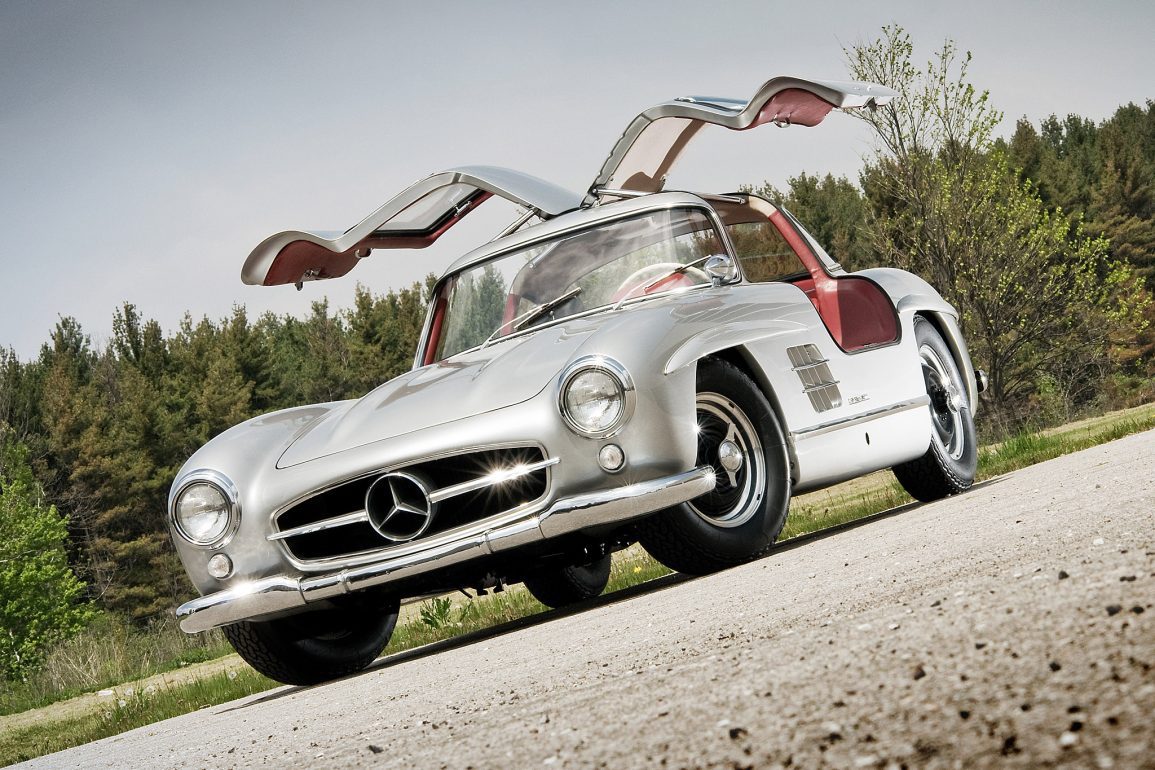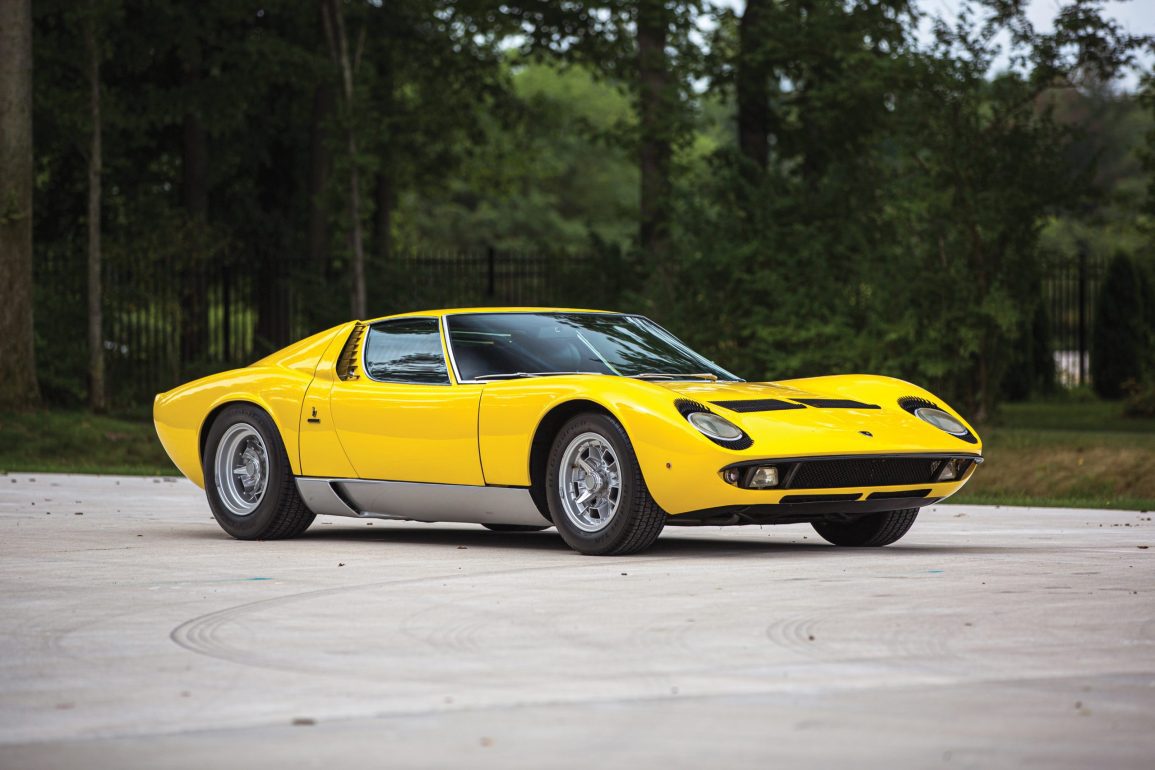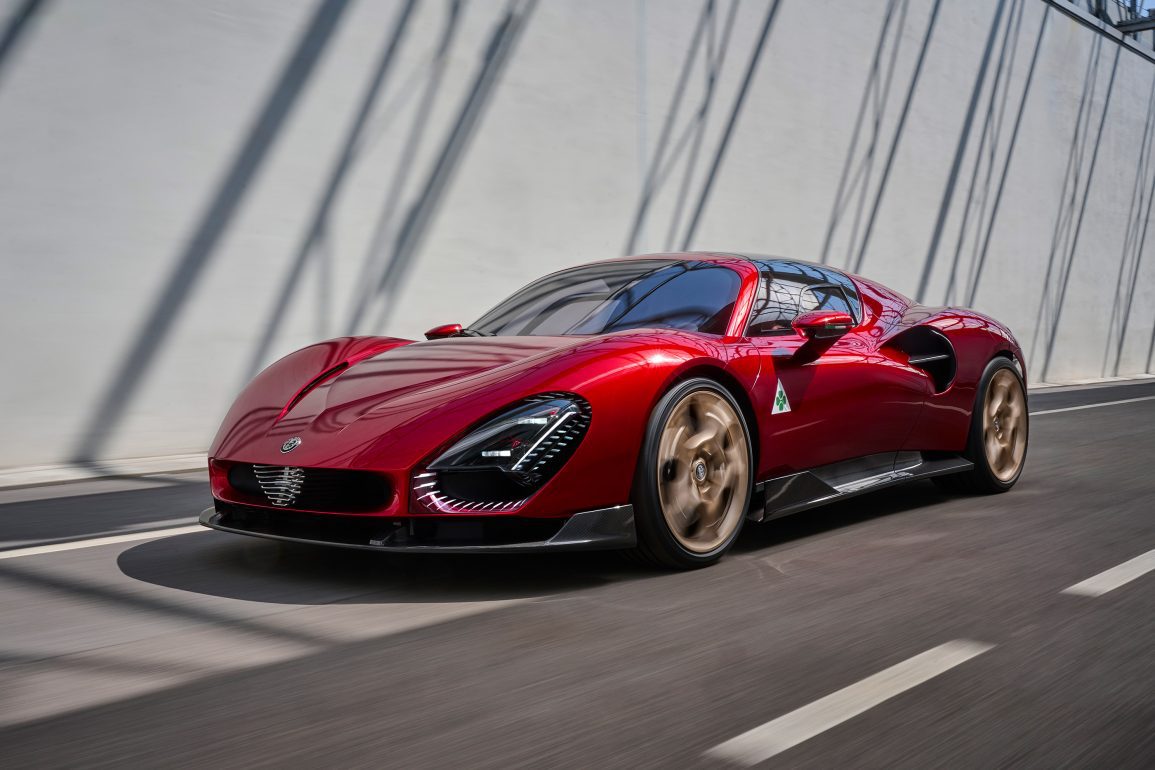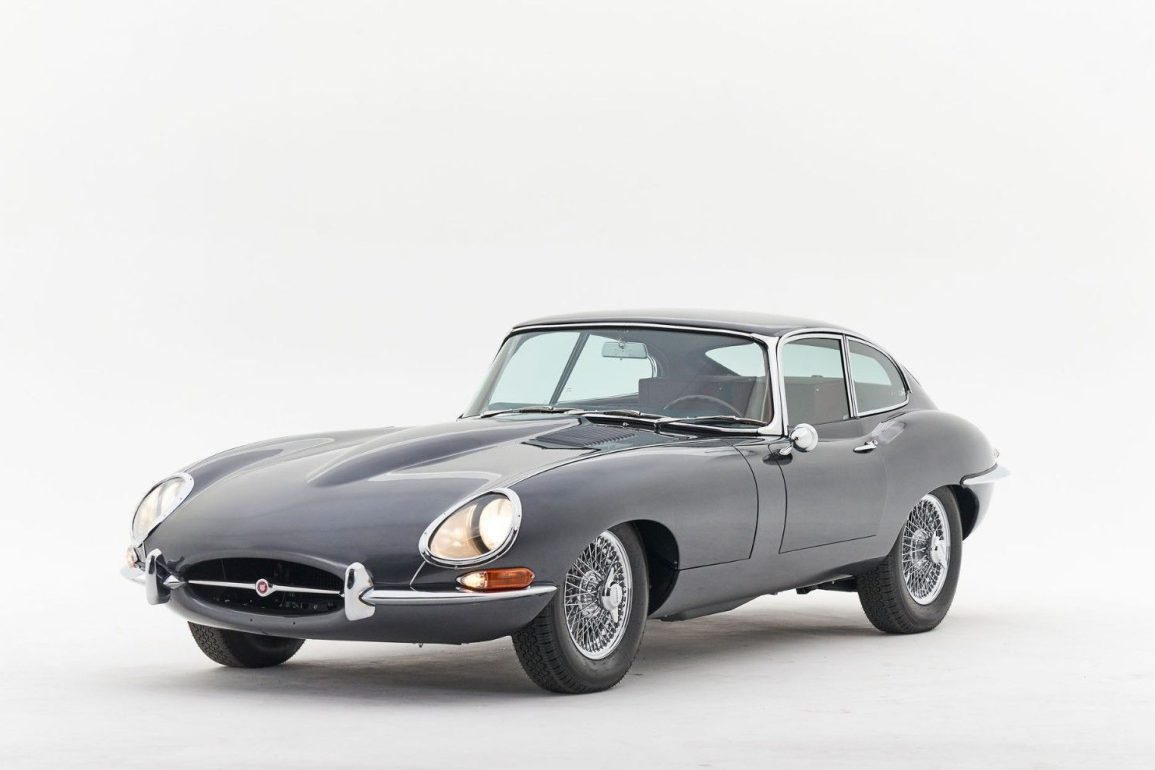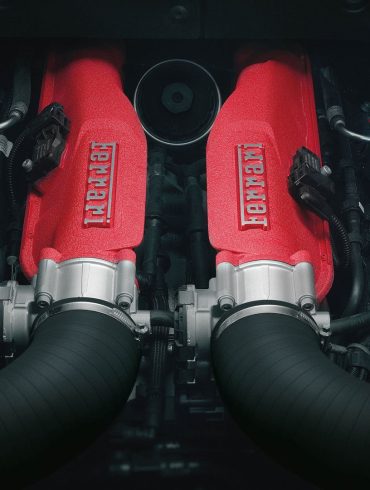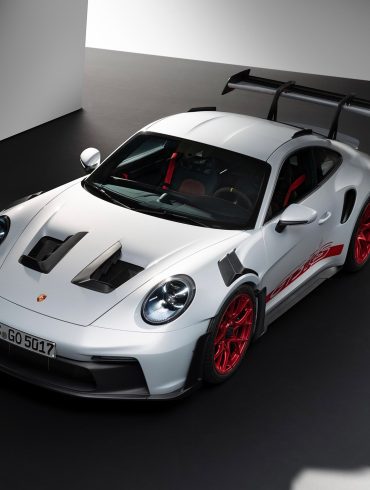The 50 Most Beautiful Cars of All Time
Updated January 2025 by Nick Dellis
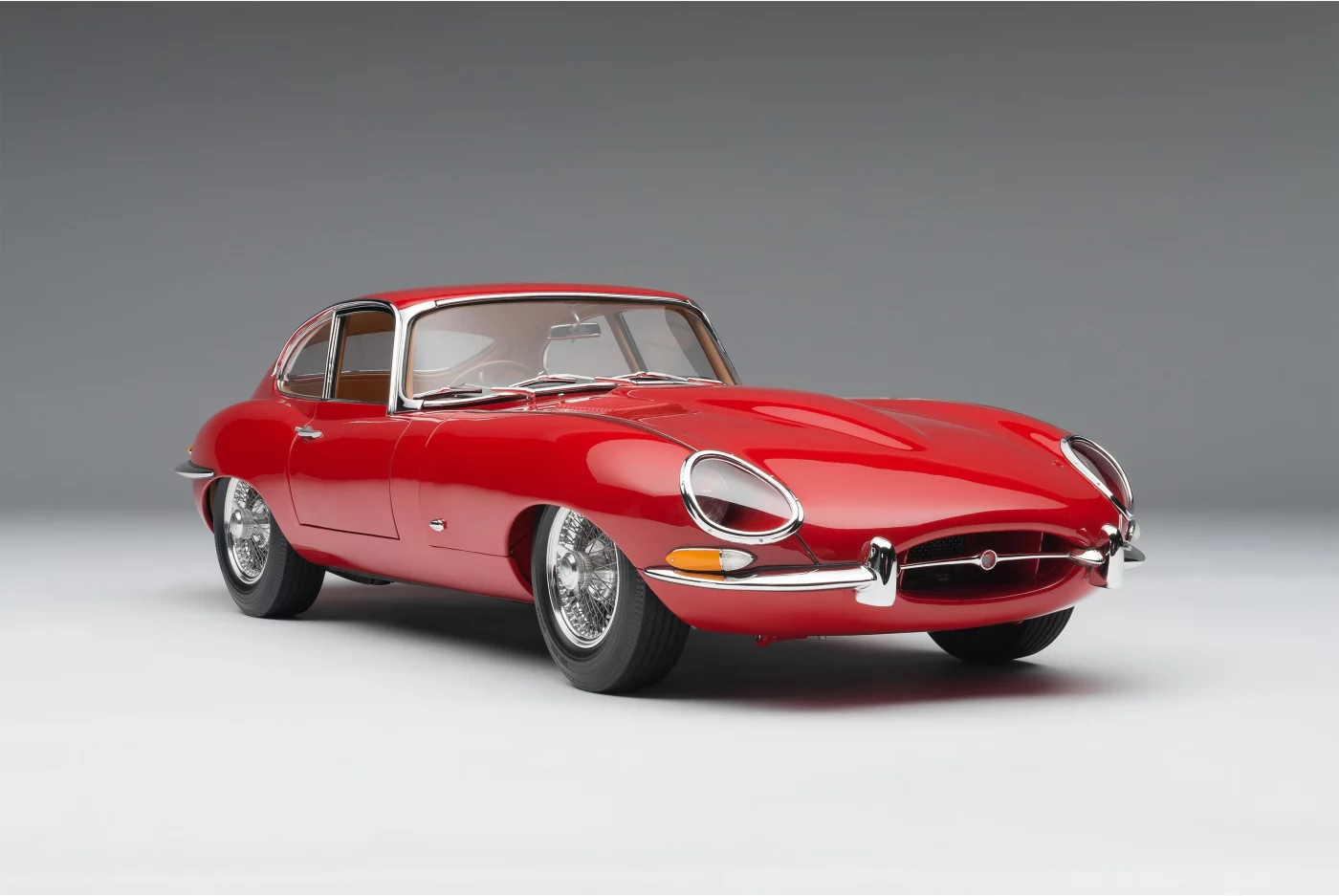
From timeless classics that embody pure elegance to daring designs that prioritize form over function and even the flamboyant, this list celebrates the artistry and passion that transform machines into rolling masterpieces.
About Our Selections
Automotive design is a delicate balance between art and engineering, where the interplay of form and function defines not only how a car performs but how it captivates onlookers. Over the decades, automotive designers have sought to create machines that not only move us physically but also evoke powerful emotions. From flowing lines and sensuous silhouettes to bold, aerodynamic forms shaped by speed, the quest for beauty has resulted in some of the most iconic designs in human history. In this article, we explore the evolution of car design by presenting our list of 50 of the most beautiful cars ever made.
Beauty in automotive design is a subjective concept, influenced by personal taste, cultural context, and technological advancements. However, certain characteristics tend to stand out across eras.
Proportion: The balance of a car’s dimensions plays a crucial role in its visual appeal. Well-balanced proportions evoke a sense of harmony and elegance.
Silhouette: The overall shape or outline of a car can make it instantly recognizable and memorable. From the flowing curves of classic grand tourers to the aggressive stance of modern supercars, silhouette defines a car’s presence.
Details: Fine details such as grille design, headlight shape, and trim accents add character and uniqueness to a car’s appearance.
Innovation: Many of the most beautiful cars broke new ground in design and engineering, setting trends that would influence future generations.
But more important than all of those is how a car makes you feel the first time you lay eyes on it. Is there an emotional connection, does it get you excited and does it make you weak in the knees. Sound a lot like love. I guess it is. These are the cars we love.
With these criteria in mind, the following list represents a diverse selection of cars that have captured the imagination of enthusiasts and designers alike. From pre-war classics to cutting-edge hypercars, each model embodies a unique vision of automotive beauty.
The history of automotive design is a story of constant evolution, driven by changing tastes, technological progress, and the desire to create something extraordinary. From the elegance of the Jaguar E-Type to the bold experimentation of the Lamborghini Miura, each era has contributed its own unique masterpieces. As we look to the future, the pursuit of beauty in car design remains a timeless endeavor that continues to inspire.
Notable Mention: TVR T350
A powerful, lightweight British sports car with a truly distinctive design.
Why We Picked It:
The TVR T350, a British sports car manufactured from 2002 to 2006, is a potent blend of raw power and striking aesthetics. Born from the TVR Tamora, the T350 boasts a muscular, aerodynamic design characterized by its sculpted curves, low-slung profile, and aggressive stance. 1 Available in both coupe (T350c) and targa (T350t) versions, its lightweight body, crafted from fiberglass, houses a formidable 3.6-liter Speed Six engine, delivering a thrilling 350 horsepower. 2 This potent powerplant, coupled with a responsive 5-speed manual transmission, propels the T350 to exhilarating speeds, making it a true driver's machine.
Beyond its performance prowess, the T350 captivates with its distinctive design elements. The elongated headlights, prominent air intakes, and sharply raked rear end contribute to its aggressive persona, while the interior offers a driver-focused cockpit with minimalist aesthetics. Though relatively unknown compared to other sports cars, the TVR T350 stands as a testament to British craftsmanship and engineering, offering a unique and unforgettable driving experience.
Did You Know:
The TVR T350's speedometer goes all the way to 200 mph! While it may not actually reach that speed, the optimistic gauge hints at the car's serious performance potential and adds to its "rebellious" spirit.
Learn More:
Notable Mention: Jaguar XK 120
Wartime recycled, racetrack ready.
Why We Picked It:
With its French curves, 120 mph performance and a price tag of £988, the XK120 was Jaguar’s most important roadster. In 1948 it set a new standard of post-war performance which progressed into a comprehensive motor sports campaign and won the 24 Hours of Le Mans five times in seven years. Before it was allowed to race, Sir William Lyons personally tested an XK120 at Silverstone himself. He called it the ‘Super Sports Two Seater’, but after reaching 120 mph in Belgium, it was simply known as the XK120.
Inspired by Italian sports cars and the streamlined styling of the French design houses, Sir William Lyons personally sketched out the basic silhouette for the 120. In what must have been a difficult task, the panel beaters slowly embodied the simple steel chassis with a sweeping hand-hammered aluminum body. The resulting prototype was timeless, simple and instantly recognizable.
Did You Know:
The Jaguar XK120 Alloy Roadster was built with an aluminum body, but not just any aluminum! These early XK120s used aluminum salvaged from wartime aircraft production. This resourceful approach helped Jaguar get the car to market quickly after World War II, while also giving it a lightweight and agile character.
Learn More:
Notable Mention: Aston Martin DBS Superleggera
A sexy and stunning modern grand tourer.
Why We Picked It:
In June 2018, Aston Martin unveiled the DBS Superleggera (Italian for Superlight) — the marque’s V12 flagship grand tourer based on the outgoing DB11 V12 but featuring modifications that sets it apart from the DB11 lineage. The DBS Superleggera combines the best of the modern Aston Martins with a historic name presented in a stunning package.
While the DBS shares a design with the all-aluminum DB11, carbon fiber adorns much of the body. Lucky buyers can choose from the coupe or the Volante convertible, which offers the same top speed but looks the business with its soft top folded.
Did You Know:
The Aston Martin DBS Superleggera has a "curlicue" aerodynamic feature that's hidden in plain sight! Look closely at the small vents just behind the front wheels, and you'll notice a swirling design within them. This isn't just for show. These "curlicues" are carefully sculpted to reduce air pressure in the wheel arches, improving airflow and increasing downforce for better stability at high speeds.
Learn More:
Notable Mention: Lexus LC
Lexus shows the big boys how to design a luxury GT
Why We Picked It:
The gloriously outrageous LC coupe began life as a similarly wild-looking 2012 concept car that Lexus had no plans to build. Four years after that show car debuted, it made a nearly edit-free transition to production as the LC coupe, reaching Lexus dealerships as a car people could actually buy.
It’s easy to miss the LC’s classic grand tourer shape behind the eye-catching hourglass-shaped grille, squinting headlights, spectacular rear fenders, and “floating” roof. Minimalist the Lexus’s design is not, but we think its sci-fi detailing adds to the car’s beauty, not subtracts from it.
Did You Know:
The Lexus LC has door handles that pop out! They're flush with the body when the car is locked, giving it a super sleek and aerodynamic look. But touch the sensor, and the handle gracefully extends outward, inviting you to enter.
Learn More:
50. Aston Martin DB2/4 MkIII
Curvaceous, with those recognizable Aston cues starting to appear.
Why We Picked It:
The Aston Martin DB2/4 MkIII, produced from 1957 to 1959, represents a pivotal point in the marque's history, bridging the gap between the elegant DB2/4 and the groundbreaking DB4. This refined grand tourer, available as both a coupe and a drophead convertible, exuded an air of sophisticated sporting intent. Its design, penned by Frank Feeley and further enhanced by Tickford designer Bert Thickpenny, featured a distinctive front grille inspired by the DB3S racing car, giving it a more aggressive and recognizable face. Under the hood, a potent 2.9-liter Lagonda inline-six engine delivered up to 162 horsepower, providing spirited performance for the era.
The DB2/4 MkIII offered a luxurious and comfortable interior, appointed with fine leather and wood trim. Its innovative hatchback design, a rarity in those days, provided practicality and accessibility, making it suitable for both grand touring adventures and everyday use. With its blend of performance, luxury, and practicality, the DB2/4 MkIII solidified Aston Martin's reputation for crafting sophisticated and desirable automobiles.
Did You Know:
Though the Aston Martin DB5 is the iconic James Bond car, Ian Fleming actually placed his fictional spy behind the wheel of a DB Mark III in the original "Goldfinger" novel!
The DB2/4 MkIII was the first production car to feature a "hatchback" style rear door, a design element that would become increasingly popular in later decades. This innovative feature enhanced its practicality and set it apart from its contemporaries.
Learn More:
49. Mercedes-Benz 230 SL
Timeless automotive beauty
Why We Picked It:
The Mercedes-Benz 230 SL has a tasteful and sophisticated design without being excessive. It included everything one would want in a sports car: a straight-six engine, fuel injection, two seats, four-wheel independent suspension, and a retractable hardtop, all wrapped in one of the most beautiful, sleekest car designs ever.
French automotive designer Paul Bracq played a significant role in shaping the car's aesthetic and the distinctive removable hardtop, which earned the car its "pagoda" nickname. Friedrich Geiger, a German designer, contributed to the overall design and engineering aspects of the 230 SL.
The removable hardtop featured a concave shape, which is unusual because most roofs are convex when viewed from the front or back. The idea was to increase the car's structural stiffness to safeguard its occupants in a rollover crash and improve its aesthetics by allowing for larger windows and a more open feel.
Did You Know:
Design-wise, the 230SL was far ahead of its time, and the driving experience was startlingly cutting-edge.
It starts and idles like a new car thanks to multi-point fuel injection instead of the typical carbureted engines of the time.
Learn More:
48. Jaguar C-X75
Potential XJ220 successor a stunner. We all hoped they'd build this concept.
Why We Picked It:
Jaguar has revealed a stunning range-extended electric supercar concept car. The C-X75 has been designed to celebrate 75 years of the marque and provide a glimpse into the future of Jaguar and its commitment to producing beautiful, fast cars powered by sustainable means.
“The C-X75 is a tribute to the people who shaped the iconic Jaguars that are revered to this day. By making it an innovative test-bed for the technologies of tomorrow, it also ensures that our reputation for engineering excellence will continue for another 75 years and beyond.” Mike O’Driscoll, Managing Director, Jaguar Cars
Did You Know:
The Jaguar C-X75 was initially designed to be a hybrid supercar with a truly wild powertrain: micro gas turbines! These tiny jet engines were meant to charge the batteries that powered the car's electric motors.
Learn More:
47. Ferrari 250 GT SWB Berlinetta
Shorter wheelbase, lighter chassis, and more aerodynamic bodywork draped over the 3.0L Columbo V12
Why We Picked It:
The 1960 Ferrari 250 GT SWB Berlinetta, often referred to simply as the "SWB," perfectly embodies Ferrari's golden era. Its short wheelbase (SWB) chassis, designed by Giotto Bizzarrini, provided exceptional handling and agility, making it a dominant force on both road and track. Clothed in Scaglietti's masterful aluminum bodywork, the SWB is a masterpiece of automotive design, characterized by its flowing lines, muscular haunches, and iconic egg-crate grille. Beneath its sculpted hood resides a potent 3.0-liter Colombo V12 engine, capable of producing around 240 horsepower, enough to propel the lightweight berlinetta to a top speed of 150 mph.
The 250 GT SWB achieved considerable success in motorsport, with victories at the Tour de France Automobile and the 24 Hours of Le Mans.
But beyond its racing pedigree, the SWB is revered for its exquisite beauty and timeless elegance. Its harmonious proportions, delicate details, and purposeful stance create an aura of undeniable allure, solidifying its place as one of the most desirable and valuable cars ever produced.
Did You Know:
The 250 GT SWB was available with either a steel body or a lighter aluminum body. The aluminum-bodied cars, built primarily for racing, are even more sought-after by collectors today.
Stirling Moss, a renowned Formula One driver, played a crucial role in the development of the 250 GT SWB. He provided valuable feedback to Ferrari engineers during testing, which helped refine the car's handling and performance.
Learn More:
46. BMW I8 Concept
The Future. By BMW
Why We Picked It:
While the production car looks amazing, it is the concept that wins the spot on our list. The BMW Group showcased its visions of future mobility in the shape of the BMW i3 Concept and BMW i8 Concept studies. Unveiled for the first time, these concept vehicles provided a glimpse of the first electrically powered production cars from the new BMW i sub-brand.
Did You Know:
The BMW i8 Concept was a pioneer in sustainable materials! Its interior featured Kenaf fiber, a plant-based material, for parts of the dashboard and door panels. This was a forward-thinking approach to reduce the car's environmental impact and explore renewable resources.
Learn More:
45. Maserati GranTurismo MC Stradale
Sexiest, Lightest And Most Powerful Maserati of the 201os
Why We Picked It:
The new Maserati GranTurismo MC Stradale will be the fastest, lightest and most powerful car in the Maserati range when it goes on sale in the first quarter of 2011. Inspired by the Trofeo GranTurismo MC and the race-winning GT4 motorsport models, the two-seater Maserati GranTurismo MC Stradale that will debut at the Paris Auto Show will feature razor-sharp handling and will break the 300km/h barrier.
Did You Know:
The Maserati GranTurismo MC Stradale was the first Maserati with a race-inspired "Race" mode! This selectable driving mode sharpened the car's responses, quickened gear shifts, opened up the exhaust for a more aggressive sound, and adjusted the suspension for maximum performance.
Learn More:
44. BMW 507
The quintessential German roadster
Why We Picked It:
Between 1956 and 1959, Albrecht von Goertz created the stunning two-door, two-seater convertible known as the BMW 507 Roadster.
The idea came from Max Hoffman, an importer of the German brand in the United States in the post-war era, with the firm determination to relaunch the brand with a car that could rival the Mercedes-Benz 300 SL and compete with locals like the Ford Thunderbird and the Chevrolet Corvette.
It was a robust car because, despite its contained dimensions and having beautiful bodywork sculpted in aluminum, it weighed 2,822 pounds. Its long, sharp nose, voluptuous curves, and abundance of chrome gave it a particular sense of elegance.
The car's proportions were classic roadster, with a long hood that housed the engine and a short rear deck, creating a visually balanced and sporty profile. A naturally aspirated, aluminum, 3.2-liter OHV V8 engine with two double-barrel Zenith carburetors provided 150 horsepower at the heart of the 507 vehicle.
Did You Know:
The BMW 507 was elegant and sophisticated, featuring flowing lines, graceful curves, and a harmonious overall design.
The 507 featured clean, uncluttered lines and minimalistic ornamentation. It also featured a luxurious and well-appointed interior with high-quality materials, leather upholstery, and a stylish dashboard with elegant instrumentation.
Learn More:
43. BMW M1
The first BMW M car was a sexy thing
Why We Picked It:
In the mid-1970s, BMW and Lamborghini collaborated on a new model to compete in FIA Group 5 racing; 400 cars had to be offered to the public for use on the road. Thanks to their legendary Miura, Lamborghini was already known for their wicked mid-engined sports cars.
BMW's attempt to develop a homologated, competitive vehicle was sparked by Paul Bracq's Turbo concept car from 1972. The futuristic and streamlined design of the Turbo impacted the next car Giorgetto Giugiario would build.
BMW Motorsport took over the production of the chassis, suspensions, and other essential components when Lamborghini abandoned the project owing to financial difficulties.
BMW's 6 and 7 Series sedans shared a 3.5-liter inline six-cylinder engine that was a capable powerplant but needed a significant upgrade to match the car's aspirations.
Did You Know:
Giorgetto Giugiaro created the M1's design. His design expertise is evident in the M1's clean lines, sharp angles, and sleek profile.
The M1 features pop-up headlights, a popular design element in the 1970s and added a touch of retro-futuristic charm to the car's appearance.
Learn More:
42. BMW 3.0 CSL
A thoroughbred racer
Why We Picked It:
Despite its origins as a homologation vehicle for the European Touring Car Championship, the CSL is widely regarded as a legendary model for the automotive industry.
Its remarkable small weight and aggressive aerodynamic features allow for stability at incredible speeds and are just two of its exceptional characteristics. Its extended profile and eye-catching spoilers made it recognizable on racetracks worldwide, where it acquired the affectionate nickname "Batmobile."
The 206 horsepower in the CSL came from its Bosch fuel injection system. In addition, all future developments in the E9 series would be required to have a six-cylinder engine. In 1973, displacement increased from the initial 2,985 cc offering to 3,153 cc.
The highest speed achieved while accelerating in fourth gear was an astonishing 137 miles per hour, attesting to the vehicle's stellar manual gearbox capability.
Did You Know:
BMW commissioned Alpina to create the 2800 CS-based lightweight coupe in October 1970. The fabled 3.0 CSL is the result. Alpina engineers made 20 alterations to the car and shaved 215 kg despite only aiming to lose 130.
The 1973 BMW 3.0 CSL is a proper classic sports car, considered one of the most essential BMWs ever made. It’s beautiful and fast, and it has a rich racing history.
Learn More:
41. Aston Martin V12 Vantage Roadster S
The sexiest version of the sexiest car
Why We Picked It:
Providing the most visceral yet engaging open-top experience in Aston Martin’s current range, the new V12 Vantage S Roadster delivers characteristic sporting agility underpinned by an enviable sports ‘soundtrack’ generated by its naturally aspirated V12 engine and expertly-tuned sports exhaust.
Equipped with the latest 565 bhp (573 PS) Aston Martin AM28 6.0-litre V12 engine, featuring state-of-the-art Bosch engine management, the car is capable of reaching 201 mph and sprinting from rest to 60 mph in only 3.9 seconds (0-100km/h 4.1 seconds). Peak and low rev torque is delivered in abundance. With 620 Nm available at 5,750 rpm the V12 Vantage S Roadster is not to be found wanting in this vital department.
Crucially, too, low rev torque – measured from just 1,000 rpm – starts at a colossal 510 Nm. Together, these statistics demonstrate the Aston Martin engineers’ ability to create a ‘flatter’, yet ‘fatter’, torque curve which supports exceptional driveability and strong pick-up through the gears.
Did You Know:
The Aston Martin V12 Vantage Roadster S had a rather unusual feature for a high-performance convertible: a manual gearbox option! In an era where many sports cars and supercars were moving towards automated manual or dual-clutch transmissions, Aston Martin offered a 7-speed manual in the V12 Vantage Roadster S.
Learn More:
40. Rolls-Royce Boat Tail
Sensuous dignity, luxuriant grace and arrestingly bold nautical detail
Why We Picked It:
The Rolls-Royce Boat Tail is a bespoke, ultra-luxury grand tourer that redefines the pinnacle of automotive craftsmanship. It draws inspiration from classic Rolls-Royce boat-tailed cars of the 1930s and modern superyachts, seamlessly blending timeless elegance with cutting-edge technology. Each Boat Tail is meticulously handcrafted, with clients having extensive input in the design and customization process.
The Boat Tail's bodywork is crafted from lightweight aluminum and shaped to evoke a sense of fluid motion and aerodynamic efficiency. Its sweeping lines, accentuated by a distinctive "boat tail" rear, create a striking silhouette that is both eye-catching and timeless. The Boat Tail offers a unique and innovative feature: a retractable rear deck that transforms into a luxurious picnic area.
Did You Know:
The Rolls-Royce Boat Tail is the most expensive new car ever sold, with an estimated price tag of around $28 million.
Each Boat Tail is hand-crafted by a team of skilled artisans, taking approximately 1,000 hours to complete.
Learn More:
39. Alfa Romeo 4C
Too bad it wasn’t fun to drive
Why We Picked It:
The final version of the Alfa Romeo 4C makes its début at the 83rd International Motor Show in Geneva. This mid-engined rear-wheel drive coupé with two bucket seats represents the true essence of a sports car at the heart of Alfa Romeo’s DNA: performance, Italian style and technical excellence, offering maximum driving satisfaction in total safety.
The Alfa Romeo 4C derives directly from the concept which raised many eyebrows in wonder at the Geneva Show in 2011, so much so that it won three prestigious awards.
Did You Know:
The Alfa Romeo 4C has a unique feature that might surprise you: it has no power steering! The 4C relies on good old-fashioned elbow grease to turn the wheels. This design choice was made to reduce weight and provide a more direct and engaging driving experience.
Learn More:
38. Porsche 904 GTS
A racer for which road car production was required for homologation.
Why We Picked It:
While the Porsche 904 GTS is best known for its racing pedigree, it was also offered as a road-legal production car. This meant that enthusiasts could experience the thrill of a race-bred machine on public roads, albeit with a few concessions to practicality and comfort. The production 904 GTS retained the sleek, aerodynamic body and lightweight construction of its racing counterpart, but featured a slightly detuned engine and a more civilized interior.
Under the hood, the production 904 GTS housed a 2.0-liter, four-cylinder engine, producing around 180 horsepower. While this was less powerful than the race-spec version, it still provided exhilarating performance, capable of propelling the lightweight car to a top speed of around 160 mph. The interior, while spartan by modern standards, offered basic amenities such as comfortable seats, a heater, and even a rudimentary sound system.
Despite its racing origins, the 904 GTS proved to be a surprisingly tractable road car. Its lightweight design and responsive handling made it a joy to drive on winding roads, while its aerodynamic efficiency ensured comfortable cruising at high speeds.
Did You Know:
To meet homologation requirements for racing, Porsche had to produce at least 100 road-going versions of the 904 GTS. They ended up building 106, just enough to satisfy the rules.
The production 904 GTS was one of the most expensive cars of its time, with a price tag that rivaled that of a Ferrari. Despite its high cost, it quickly sold out, demonstrating the strong demand for Porsche's high-performance machines.
Learn More:
37. Bentley EXP 10 Speed 6
I still want one
Why We Picked It:
Bentley Motors showed off the future direction of luxury and performance with the EXP 10 Speed 6 at the 2015 Geneva International Motor Show. The concept is a British interpretation of a high performance two seater sportscar using modern automotive design, highly skilled handcrafting, the finest materials and advanced performance technology.
The exterior design of EXP 10 Speed 6 is an expression of muscular, athletic surfaces inspired by the aerodynamic shapes of aircraft fuselages and wings.
Did You Know:
The Bentley EXP 10 Speed 6 concept car, while never making it to production, had a fascinating detail: its headlights were inspired by the quilted leather pattern found in Bentley's interiors! The intricate design of the headlights, with their faceted surfaces and complex detailing, was a nod to the brand's renowned craftsmanship and attention to detail.
Learn More:
36. Alfa Romeo Giulietta Spider Veloce
Irresistible Italian charm
Why We Picked It:
The Alfa Romeo Giulietta Spider Veloce is the ultimate expression of Italian style and zeal in the automotive realm. Since its introduction in the late 1950s, this timeless roadster has captivated fans with its stunning design and exciting performance.
With its long, sensual hood, beautiful contours, and signature Alfa Romeo grille, the Giulietta Spider Veloce has classic roadster proportions. The sleek silhouette and cozy cockpit give it an air of timeless sophistication.
The sporty interior displays the designer's attention to detail, and the driver-focused design and the soft convertible top add to the vehicle's allure by allowing for open-air driving.
The Veloce model has a powerful 1.3-liter twin-cam inline-four engine that generates about 90 horsepower. This power level makes for an exhilarating and entertaining ride in concert with the car's low curb weight and agile handling.
Did You Know:
Pininfarina designed the Giulietta Spider Veloce, which features several classic Alfa Romeo styling cues, such as the triangular grille and the swept-back headlights.
The Giulietta Spider Veloce was also very rare. Only 2,500 examples were produced, making it one of the most collectible Alfa Romeos.
Learn More:
35. Alfa Romeo Giulia Quadrifoglio
Sexiest family car on the planet
Why We Picked It:
The Alfa Romeo Giulia Quadrifoglio is a high-performance sports sedan that embodies the passion and spirit of Italian motoring. It's a car that ignites the senses with its seductive design, exhilarating performance, and undeniable charisma. From its aggressive stance and sculpted lines to its throaty exhaust note and razor-sharp handling, the Giulia Quadrifoglio is a true driver's machine.
At the heart of this beast lies a Ferrari-derived 2.9-liter twin-turbocharged V6 engine, churning out a monstrous 505 horsepower and 443 lb-ft of torque. This power is channeled to the rear wheels through an 8-speed automatic transmission or an optional 6-speed manual, allowing for blistering acceleration and a top speed of 191 mph.
But the Giulia Quadrifoglio is more than just brute force. Its lightweight construction, near-perfect weight distribution, and advanced suspension system deliver exceptional handling and agility, making it a joy to carve through corners.
Did You Know:
The Alfa Romeo Giulia Quadrifoglio has a carbon fiber driveshaft. This isn't just a fancy material choice. Using carbon fiber for the driveshaft makes it incredibly lightweight and strong, which contributes to the car's impressive performance and handling. It reduces rotational mass, allowing the engine to rev more freely and deliver power to the rear wheels more efficiently.
Learn More:
34. Ferrari 308 GTB
Another Pininfarina work of art
Why We Picked It:
The styling of the 308 GTB stands out thanks to its classic Ferrari mid-engine layout that provides a more balanced weight distribution and superior handling compared to most front-engine vehicles.
Secondly, the 308 GTB boasts an angular design. Its sharply sloping roofline contributes to a sporty stance. Thirdly, the bodywork of the 308 GTB is constructed using durable fiberglass material. This helps keep the car's weight minimum, enhancing its handling capabilities.
All in all, the exceptional design of the Ferrari 308 GTB serves as a testament to Pininfarina craftsmanship and Ferrari's unwavering dedication to crafting visually striking high-performance sports cars.
The enduring allure lies in its timeless styling, aerodynamic efficiency, and undeniable aura, which distinctly embody what it means to be a Ferrari on the road.
Did You Know:
Leonardo Fioravanti of Pininfarina was in charge of designing the Ferrari 308 GTB. Fioravanti created other famous Ferrari shapes, such as the Daytona, the Dino, and the Berlinetta Boxer.
The 308 GTB, like many Ferraris, features a mid-engine layout, placing the engine behind the driver and enhancing the car's balance, handling, and overall performance.
Learn More:
33. Audi R8 (2007)
Sharp lines, aggressive stance, and signature side blades. She's a stunner.
Why We Picked It:
The first generation of the R8 was based on the Audi Le Mans Quattro concept car, featuring a distinctive design with a mid-engine layout. Based on the Lamborghini Gallardo, it stunned with its sharp angles, low stance, and signature LED lights. Many called it a "modern supercar masterpiece," a "sleek and futuristic vision," and a "head-turner guaranteed." Reviews praised its "exhilarating power," "precise and responsive steering," and "incredible balance between performance and everyday usability."
It was initially equipped with a 4.2-liter V8 engine, producing 420 horsepower. Later, a more powerful 5.2-liter V10 engine derived from the Lamborghini Gallardo was introduced, offering 525 horsepower. The R8 was available with manual or R tronic semi-automatic transmissions, and in 2010, a Spyder (convertible) version was introduced. The first-generation R8 established itself as a credible competitor to established sports cars from Porsche and Ferrari. Critics lauded the car for its everyday usability, comfort, and quattro all-wheel-drive system, which provided excellent grip and stability.
Did You Know:
The distinctive "side blades" on the R8 serve both an aesthetic and functional purpose. They not only enhance the car's visual appeal but also help direct air to the engine for cooling.
The first-generation Audi R8 shared its platform and many components with the Lamborghini Gallardo, as both brands were under the Volkswagen Group umbrella.
This collaboration allowed Audi to develop a world-class supercar at a more accessible price point.
Learn More:
32. Ferrari F355 GTS
Sexiest Ferrari ever? Gets better with age.
Why We Picked It:
As part of the F355 lineup, Ferrari added the GTS in 1995. The GTS version was based on the F355 Berlinetta but had a removable "targa-style" roof. The F355 GTS used the same 40-valve V8, producing 375 hp and 268 lb-ft of torque. The Berlinetta shared all the same other specs.
The V8 engine can reach an impressive 8,250 rpm and has a throaty, gruff, quintessentially Ferrari tone. The 4.7-second 0-62 mph time and the 183 mph top speed were impressive then.
This Ferrari stands out because of its stunning good looks, the delightful click-clack of its gated shifter, and the roar of its powerful V8 engine.
The Ferrari is stunning, and it even has pop-up headlights, a throwback to the '90s. It was nearly identical to the 348 in size, but its redesigned body resulted from extensive wind tunnel testing.
Did You Know:
The Ferrari F355 was one of the most visually stunning cars of the 1990s, thanks to Pininfarina's design.
The cabin features excellent materials and a gorgeous gated shifter, while the exterior design boasts perfect proportions. Its low profile and wide stance give the car a sense of power and elegance.
Learn More:
31. Bentley Continental Supersports
209 mph luxury GT done right
Why We Picked It:
The Bentley Continental Supersports with its 209 mph top speed is arguably the fastest four-seater car in the world right now.
Despite it being heavy with a curb weight of over 5,000 pounds, it still manages to beat sports cars like the Porsche 911 GT3 with 199 mph top speed and the Audi R8 V10 Plus with 205 mph top speed.
Its speed comes from its 6.0-liter twin-turbo W-12 engine that produces a massive 700 horsepower and 750 pound-feet of torque, propelling the car to hit the 200 mph mark even with your friends in tow!
Did You Know:
The Bentley Continental Supersports is ridiculously fast, but here's the kicker: it can run on biofuel! That's right, this luxury performance car can be fueled with E85, a blend of gasoline and ethanol. This makes it one of the most powerful biofuel-compatible cars ever produced.
Learn More:
30. Lancia Stratos
An homologation success story and a unique design
Why We Picked It:
The Lancia Stratos was the first production automobile designed to compete in the World Rally Championship. The Lancia Stratos is among the most motorsport-ish vehicles from the 1970s. The Stratos's design was very futuristic for its time. The car's sharp angles and aerodynamic shape were unlike anything else on the road.
The rally version still had an unusual design, making it look more like an exotic road-going supercar than a dedicated rally vehicle. After an initial production order of 500 units was placed in 1973, the car was homologated in 1974 as a Group 4 challenger in the World Rally Championship.
The Group 4 rally car shared its engine with the road-going Stradale variant; however, the output was increased from 265 bhp for the 12-valve version to 320 horsepower for the 24-valve version. Only the 12-valve version of the car was legal to race that year due to restrictions, but it didn't slow it down.
Did You Know:
Bertone, an Italian car design studio, designed the Lancia Stratos.
The Stratos was created by Marcello Gandini and was powered by a mid-mounted Ferrari Dino V6 engine, which was potent and reliable.
Learn More:
29. Alfa Romeo 1750 GTV
Who said affordable Italian sports coupes can't also be stylish too
Why We Picked It:
The Alfa Romeo 1750 GTV, launched in 1968, was a stylish and sporty coupe that perfectly captured the essence of Italian automotive design. Penned by the renowned Giorgetto Giugiaro during his time at Bertone, the 1750 GTV boasted a classic fastback profile with a low-slung nose, a Kamm tail, and a distinctive "scalino" or step in the roofline. This unique design element not only added visual flair but also improved rear passenger headroom.
Under the hood, the 1750 GTV featured a spirited 1.7-liter, four-cylinder engine with a twin-cam design and a Spica mechanical fuel injection system. This advanced engine produced around 120 horsepower, providing brisk acceleration and a top speed of over 115 mph. Paired with a five-speed manual transmission and a well-balanced chassis, the 1750 GTV delivered an engaging and rewarding driving experience.
With its combination of striking design, spirited performance, and affordable price, the 1750 GTV quickly became a popular choice among enthusiasts, solidifying Alfa Romeo's reputation for building beautiful and engaging sports cars.
Did You Know:
The 1750 GTV was one of the first cars to feature a "dog-leg" first gear pattern, where first gear is located down and to the left of the shift pattern. This configuration was common in race cars and was intended to facilitate quicker shifts between second and third gear.
The 1750 GTV was used extensively in motorsport, achieving success in various touring car championships and rallies. Its lightweight design and agile handling made it a competitive contender on both paved and unpaved roads.
Learn More:
28. Maserati Ghibli (1967)
The most exciting electric car company around
Why We Picked It:
In 1966, Maserati began a project for a new Gran Turismo automobile in the finest tradition of the marque. Named after a stormy Egyptian desert wind, the Ghibli looked nothing like what came before, and would have been a sensation based on looks alone. The dramatic styling was the work of a young Giorgetto Giugiaro, at that time working for the Ghia studio in Turin.
The body of the Ghibli was perfect in every detail and is regarded not just as one of Giugiaro’s most beautiful designs, but one of the most significant automobile designs of the postwar era. A true thoroughbred GT, it was originally conceived as a two-seater, despite being more than 15 feet long. However, production versions had a 2+2 seat configuration, powered by the V8 engine from the Quattroporte and Mexico, modified with a dry-sump lubrication system in order to fit under the long, low Ghibli hood.
Did You Know:
Unveiled at the Turin Motor Show in late 1966 on the Ghia stand, the project was principally overseen by Maserati engineer Giulio Alfieri, with deliveries beginning in March of the following year. The steel bodies, with aluminum hood, were manufactured by Vignale. From 1969, the Ghibli was also available with a 4.9-liter engine, named Ghibli SS, and a Spyder version was added to the lineup that same year. Production of all models continued through 1973, with a total of 1,170 coupes and 125 Spyders produced.
Learn More:
27. Aston Martin Vanquish (2001)
Luxurious and high-performance GT that combines classic British design with modern engineering.
Why We Picked It:
The Aston Martin V12 Vanquish, produced from 2001 to 2007, represents a pinnacle of British automotive excellence. It was designed to replace the DB7 and serve as the company's flagship grand tourer. The Vanquish's sleek and muscular design, penned by Ian Callum, perfectly embodied Aston Martin's signature blend of elegance and performance. Under its sculpted aluminum bodywork, a powerful 6.0-liter V12 engine roared to life, delivering 460 horsepower and propelling the Vanquish to a top speed of 190 mph.
The Vanquish's interior was equally impressive, featuring a luxurious cabin crafted from fine leather, wood, and aluminum. It offered a blend of comfort and sportiness, with supportive seats, a thick steering wheel, and a comprehensive instrument cluster. The Vanquish also boasted a range of advanced features, including a Bose audio system, satellite navigation, and a rearview camera.
Beyond its performance and luxury, the Vanquish also stood out for its innovative engineering. It was the first production car to feature a carbon fiber and aluminum composite chassis, resulting in a lightweight and rigid structure that enhanced handling and agility. The Vanquish's advanced suspension system and powerful brakes further contributed to its exceptional driving dynamics.
Did You Know:
The Aston Martin Vanquish was featured in the James Bond film "Die Another Day," showcasing its blend of luxury and performance on the big screen.
The Vanquish was available with a unique "Touchtronic 2" transmission, which allowed for both automatic and manual shifting.
This system provided drivers with the convenience of an automatic transmission while still allowing for a more engaging driving experience.
Learn More:
26. McLaren F1
THE supercar
Why We Picked It:
McLaren designed the F1 to have the best possible power-to-weight ratio by balancing a lightweight body with a potent engine and cutting-edge aerodynamics. BMW's M Sport division produced the F1's engine, initially intended for the canceled M8.
The McLaren F1's transversely mounted 6.1-liter V12 engine developed 627 horsepower and 479 pound-feet of torque, allowing the car to accelerate from 0 to 60 miles per hour in just 3.2 seconds using an AP triple plate clutch.
The engine and hood received a 24-carat gold wash for heat dissipation. As one of the quickest, most technologically advanced, and arguably best-looking cars in history, the McLaren F1 has been rated the greatest supercar ever by enthusiasts and experts.
For ten years, until the Bugatti Veyron surpassed its top speed of 259 mph, the F1 was the fastest production automobile with a 240 mph top speed.
Did You Know:
The McLaren F1 iconic design is the work of Gordon Murray, a British engineer considered one of the greatest automotive designers. Murray is also the designer of the McLaren MP4/4, which won the Formula One World Championship in 1988, 1989, and 1990.
The McLaren F1 combines stunning design, incredible performance, and cutting-edge technology. It's no wonder the F1 is still considered one of, if not the greatest supercars ever.
Learn More:
25. Ferrari 458 Spider
Stunning drop top V8 Ferrari
Why We Picked It:
The Ferrari 458 Spider is a masterpiece of automotive engineering and design, a convertible that delivers breathtaking performance and unparalleled open-air exhilaration. It's a car that stirs the soul with its seductive lines, its ferocious V8 engine, and its ability to transform from a sleek coupe to a wind-in-your-hair roadster in a matter of seconds.
At the heart of the 458 Spider beats a naturally aspirated 4.5-liter V8 engine, producing a symphony of power with its 562 horsepower and spine-tingling exhaust note. This potent engine, mounted just behind the driver, is mated to a lightning-fast 7-speed dual-clutch transmission that delivers seamless shifts and explosive acceleration. 2 The 458 Spider can sprint from 0 to 60 mph in just over 3 seconds, making it one of the quickest convertibles of its time.
But the 458 Spider is more than just raw power. Its lightweight aluminum chassis, advanced aerodynamics, and sophisticated suspension system work in harmony to deliver exceptional handling and agility.
Did You Know:
The Ferrari 458 Spider has a unique retractable hardtop that folds away in just 14 seconds. What makes it even more special is that it was the world's first mid-rear-engined car to feature this kind of roof. Most convertibles with retractable hardtops have the roof stored behind the seats, but Ferrari's engineers cleverly designed the 458 Spider's roof to fold and tuck away neatly in front of the engine bay.
Learn More:
24. Alfa Romeo 8C Competizione
Alfa Romeo’s forgotten supercar still a stunner
Why We Picked It:
The Alfa Romeo 8C Competizione, a limited-production sports car produced from 2007 to 2010, is a modern masterpiece that pays homage to Alfa Romeo's rich racing heritage. Its name, "8C," references the powerful eight-cylinder engines that powered Alfa Romeo's legendary race cars of the 1930s, while "Competizione" honors the 6C 2500 Competizione, a car that triumphed in the 1950 Mille Miglia. The 8C Competizione's breathtaking design, penned by Wolfgang Egger at the Alfa Romeo Centro Stile, is a symphony of flowing lines, muscular curves, and classic proportions. Its long hood, short deck, and pronounced wheel arches create a timeless silhouette that evokes a sense of speed and elegance.
Beneath its stunning exterior, the 8C Competizione boasts a potent 4.7-liter V8 engine, sourced from Ferrari and Maserati. This hand-built powerplant produces 450 horsepower and 354 lb-ft of torque, sending power to the rear wheels through a six-speed automated manual transmission. Its lightweight carbon fiber body and advanced suspension system contribute to its exceptional handling and agility.
Did You Know:
The 8C Competizione's production was limited to just 500 coupes and 500 convertibles, making it a highly exclusive and sought-after collector's car.
The 8C Competizione's exhaust note is a symphony of mechanical music, thanks to its meticulously tuned exhaust system. It produces a deep, resonant sound that is both powerful and intoxicating.
Learn More:
23. Dino 206/246 GT
Literally invented the iconography of a mid-engine sports car that still holds true today
Why We Picked It:
The Dino 206/246 GT, produced from 1967 to 1974, holds a unique place in Ferrari history. Conceived as a more affordable and accessible sports car, it was initially marketed under the Dino marque, named in honor of Enzo Ferrari's late son, Alfredo "Dino" Ferrari. The Dino's design, penned by Leonardo Fioravanti at Pininfarina, is a masterpiece of automotive artistry. Its flowing lines, compact proportions, and signature flying buttress C-pillars create a timeless silhouette that is both elegant and sporty.
The Dino was initially launched as the 206 GT, featuring a lightweight aluminum body and a 2.0-liter V6 engine mounted transversely behind the driver. This compact and powerful engine, designed by Dino Ferrari himself, produced 180 horsepower and delivered exhilarating performance. In 1969, the 206 GT was replaced by the 246 GT, which featured a larger 2.4-liter V6 engine, cast-iron block construction, and a slightly longer wheelbase. The 246 GT offered increased power and torque, further enhancing its performance capabilities.
It became an instant success, capturing the hearts of enthusiasts and solidifying its place as a true icon of automotive history.
Did You Know:
The Dino 206/246 GT was the first Ferrari to be equipped with a mid-engine layout, a configuration that would become a hallmark of the company's high-performance sports cars.
The Dino's distinctive flying buttress C-pillars were not only a design element but also served a functional purpose. They helped to improve rearward visibility and provided additional structural support for the roof.
Learn More:
22. Chevrolet Corvette Sting Ray Split Window (1963)
Mako Shark–inspired body, hidden headlamps, and iconic split window
Why We Picked It:
The 1963 Chevrolet Corvette Sting Ray Split Window Coupe stands as an icon of American automotive design, its radical styling captivating enthusiasts even six decades later. Penned by Larry Shinoda under the direction of Bill Mitchell, the Sting Ray was a dramatic departure from previous Corvettes, boasting a sleek, aerodynamic form inspired by the Stingray racer concept car. Its most distinctive feature, and the source of its nickname, was the unique split rear window, a daring design element that unfortunately hindered rear visibility. This controversial feature, however, only lasted for the 1963 model year, making the Split Window Coupe a rare and highly sought-after collectible today.
Beyond its striking appearance, the Sting Ray delivered exhilarating performance. Powered by a range of small-block V8 engines, with options including fuel injection and multiple carburetor setups, the Corvette offered potent acceleration and a thrilling driving experience. Its independent rear suspension, a first for the Corvette, provided improved handling and roadholding. Its bold styling, innovative engineering, and impressive performance solidified its status as a true American icon, capturing the spirit of the era and inspiring generations of enthusiasts.
Did You Know:
The split rear window design was inspired by the 1959 Stingray racer concept car, which featured a similar divided window. However, the production version's split window proved to be unpopular with some buyers due to its limited rear visibility.
The 1963 Corvette Sting Ray was the first Corvette to feature hidden headlights, a design element that would become a signature feature of the model for many years to come.
Learn More:
21. Aston Martin DB7
fff
Why We Picked It:
Tom Walkinshaw Racing developed the DB7 for Ford Motor Company as a more compact alternative to the V8 Vantages. TWR used components from Jaguar and Ford to create the first conventional steel-bodied Aston Martin.
Ian Callum and Keith Helfet created the overall design, and the first-generation Jaguar XK8 inspired it. TWR also designed the in-line six-cylinder engine that displaced 3.2 liters, generating 335 horsepower and 361 lb-ft of torque.
The DB7 could reach 60 miles per hour in 5.9 seconds and a top speed of 162 miles per hour. Its engine featured a water-cooled Eaton Rootes-Type supercharger and Zytec electronic multi-point fuel injection.
The Volante convertible debuted in 1996, and Aston Martin followed it up with the Vantage, a more powerful version of the DB7 with a 6.0-liter V12 engine that produced 420 horsepower in 1999.
Did You Know:
The DB7 was a critical and commercial success. It was named "Car of the Year" by Top Gear magazine in 1994 and helped revive Aston Martin's fortunes.
The DB7 has signature Aston Martin styling with sleek, curvaceous lines, pop-up headlights, and well-balanced proportions. The DB7 was produced from 1994 to 2004 and is now considered a modern classic.
Learn More:
20. Ferrari 365 GTB/4 ‘Daytona’
A powerful and stylish grand tourer that represents the pinnacle of front-engined V12 Ferrari design.
Why We Picked It:
The Ferrari 365 GTB/4, affectionately known as the "Daytona," is a legendary grand tourer that cemented Ferrari's dominance in the high-performance car arena during the late 1960s and early 1970s. Despite its unofficial nickname, bestowed by the media in honor of Ferrari's 1-2-3 finish at the 1967 Daytona 24 Hour race, the Daytona was a road-going machine designed for spirited driving and long-distance comfort. Its sharp, aerodynamic design, penned by Leonardo Fioravanti at Pininfarina, was a departure from the curvaceous lines of its predecessor, the 275 GTB/4. The Daytona's long, low profile, aggressive nose, and Kamm tail exuded speed and power, while its luxurious interior provided a refined environment for driver and passenger.
Under the hood, the Daytona packed a formidable 4.4-liter V12 engine, producing 352 horsepower and capable of propelling the car to a top speed of 174 mph. This made it the fastest production car in the world at the time of its release. The Daytona's performance was further enhanced by its sophisticated chassis, featuring a rear-mounted transaxle for optimal weight distribution and independent suspension all around. This combination of power and handling prowess made the Daytona a formidable machine.
Did You Know:
The Daytona was initially offered with a distinctive Plexiglas-covered headlight design. However, this feature was later replaced with pop-up headlights to comply with U.S. safety regulations.
The Daytona was the last front-engined V12 Ferrari to be produced before the company transitioned to mid-engined layouts for its flagship models. It wasn't until 1996, with the introduction of the 550 Maranello, that Ferrari returned to a front-engined V12 configuration.
Learn More:
19. Alfa Romeo 6C 2500 Super Sport
Combination of timeless elegance, powerful performance, and handcrafted exclusivity.
Why We Picked It:
The Alfa Romeo 6C 2500 Super Sport, produced from 1939 to 1952, represents the culmination of Alfa Romeo's pre-war sporting legacy. It was the final evolution of the venerable 6C series, a line of sophisticated and powerful automobiles that had dominated racing and captured the hearts of enthusiasts since the 1920s. The 6C 2500 Super Sport was the most potent variant, featuring a 2.5-liter inline-six engine that produced around 110 horsepower, a significant output for the era. This powerful engine, coupled with a lightweight chassis and aerodynamic bodywork, made the 6C 2500 Super Sport a formidable performer on both road and track.
The 6C 2500 Super Sport was clothed in a variety of stunning body styles, crafted by renowned coachbuilders such as Pinin Farina, Touring, and Zagato. These bespoke bodies, often featuring flowing lines, elegant proportions, and handcrafted details, transformed the 6C 2500 Super Sport into a rolling work of art. Inside, the car's luxurious cabin offered a blend of comfort and sportiness, with fine leather upholstery, wood trim, and a comprehensive array of gauges.
Did You Know:
The 6C 2500 Super Sport was one of the first cars to feature a "column shift" gear lever, mounted on the steering column rather than the floor. This innovative design freed up space in the car's interior and provided a more comfortable driving position.
The 6C 2500 Super Sport was used as a getaway car in the 1948 film "The Third Man," driven by Orson Welles' character Harry Lime through the streets of Vienna.
Learn More:
18. Maserati A6GCS/53 Berlinetta
The most beautiful Maserati ever? Brutish, but sexy at the same time.
Why We Picked It:
Only four units of the Maserati A6GCS/53 were manufactured, a design masterpiece signed by Pininfarina that raised the throne of Maserati, at the highest point of the coachbuilder's relations with Ferrari, which led to some discomfort and some disagreement.
Part of a mechanized chassis that was for sale at the Maserati dealer in Rome, owned by Guglielmo Dei, "Mimmo" Dei, who commissioned Pininfarina to carry out the bodywork, making it one of the most beautiful cars of all time.
Pininfarina created a distinct design with brand traits for the Maserati chassis. The tubular chassis is derived from the 1940 A6GCS with improvements and is powered by an aluminum-alloy six-cylinder in-line engine churning out 170 horsepower.
The Maserati A6GCS/53 Berlinetta's styling and design were special due to their combination of aerodynamic elegance, distinctive details, race-inspired heritage, and handcrafted excellence.
Did You Know:
Italian craftsmanship and attention to detail were evident in the car's handcrafted construction. Each Berlinetta was a work of art tailored to the owner's preferences.
The A6GCS/53 Berlinetta was born from the company's popular racing cars, showcasing its performance-oriented design.
Learn More:
17. Ford GT40
A great among the greats
Why We Picked It:
The Ford GT40 is closely associated with one of the greatest moments in motorsport history, as it was specifically designed to outperform Ferrari in the renowned 24 Hours of Le Mans race. Ford's drive to win and end Ferraris's dominance during the 1960s resulted in the creation of the GT40.
The GT40 showcased cutting-edge engineering, incorporating a chassis streamlined bodywork and a mid-engine layout. Its aerodynamics and handling capabilities made it a formidable competitor on the racetrack.
It offered engine options, including a 4.7 liter V8 and a 7.0 liter V8, which delivered power outputs with specific models surpassing 500 horsepower. The remarkable performance of these engines played a role in its triumphs in endurance racing.
With its purposeful design, the GT40 boasted a slung profile, a distinctive front end, and gullwing doors, enhancing its aerodynamic efficiency and making it instantly recognizable.
Did You Know:
A few GT40s were manufactured, making them highly desirable for collectors. Their scarcity and historical importance have transformed them into cars.
The GT40's triumphs and lasting impact in motorsport have left a lasting impression on car enthusiasts, solidifying its status as a representation of motorsport excellence
Learn More:
16. Alfa Romeo 8C 2900B Lungo Spider
Most wore beautiful bodies by Carrozzeria Touring, though a few sported lines penned by Pininfarina.
Why We Picked It:
Alfa Romeo’s 8C 2900 was designed for racing, particularly the Mille Miglia. Based on the 8C 35 Grand Prix racing chassis, this mid-1930s Alfa used a 2.9-liter version of the company's straight-eight with two Roots-type superchargers fed by two Weber carburetors that afforded it an output of more than 200 horsepower. Its fully independent suspension used Dubonnet-type trailing arms, coil springs, and hydraulic dampers in front and swing axles with transverse leaf springs in back.
Available with one of two wheelbases—the 110.2-inch Corto (short) and 118.1-inch Lungo (long)—the 8C 2900B began production in 1937 with its engine detuned to less than 200 horses and some concessions to comfort and reliability. 32 production 2900Bs were built in the late 1930s and one more was built from leftover parts in 1941.
Most wore beautiful bodies by Carrozzeria Touring, though a few sported lines penned by Pininfarina.
Did You Know:
In 2016, an 8C 2900B Lungo Spider became the most expensive pre-war car ever sold at auction, fetching a staggering $19.8 million.
One of the most famous 8C 2900B Lungo Spiders was originally owned by Prince Max Egon Hohenlohe-Langenburg, a prominent figure in European high society and a racing enthusiast. This particular car, with its unique coachwork by Erdmann & Rossi, has a fascinating history, having been showcased at prestigious concours events and featured in numerous publications.
Learn More:
15. Porsche 911 (1964)
The most iconic shape in the entire automotive world.
Why We Picked It:
The original Porsche 911, introduced in 1964, is a legendary sports car that has become an icon of automotive design and engineering. Born from the desire to create a successor to the beloved 356, the 911 retained the rear-engine layout and sporty character of its predecessor while offering enhanced performance, comfort, and refinement. Its distinctive design, penned by Ferdinand Alexander "Butzi" Porsche, grandson of Ferdinand Porsche, featured a fastback profile, rounded headlights, and a sloping roofline that would become hallmarks of the 911 lineage.
Under the hood, the original 911 was powered by a 2.0-liter, air-cooled flat-six engine, producing 130 horsepower. This innovative engine, with its horizontally opposed cylinders, offered a unique sound and smooth power delivery, perfectly complementing the car's agile handling and responsive steering.
Did You Know:
The 911 was originally intended to be called the 901, but Peugeot had already trademarked the use of three-digit numbers with a zero in the middle for car names. Porsche changed the name to 911 to avoid any legal issues.
Learn More:
14. Jaguar XJ13
Pinnacle of Jaguar's engineering and design capabilities.
Why We Picked It:
The Jaguar XJ13 is a prototype racing car that embodies a fascinating blend of ambition, innovation, and ultimately, unfulfilled potential. Developed in secret during the early 1960s, it was intended to be Jaguar's weapon to reclaim victory at Le Mans. Its sleek, aerodynamic form, sculpted by renowned aerodynamicist Malcolm Sayer, was a testament to Jaguar's expertise in aircraft design. Underneath its beautiful skin resided a groundbreaking 5.0-liter V12 engine, a technological marvel that produced over 500 horsepower and was mounted in a mid-engine configuration, a first for Jaguar.
The XJ13 was a radical departure from Jaguar's previous racing cars, representing a leap forward in both design and engineering. It was built with a lightweight aluminum monocoque chassis and featured advanced suspension and braking systems. The car underwent extensive testing, achieving impressive speeds and demonstrating its potential to dominate endurance racing. However, despite its promise, the XJ13 never had the opportunity to prove itself on the track.
Did You Know:
The XJ13's V12 engine was so powerful that it was initially tested in two modified Jaguar Mark X saloons, nicknamed "Project XJ5," because no other Jaguar vehicle at the time could handle its output.
In 1971, while filming a promotional video, the XJ13 was involved in a serious accident at MIRA (Motor Industry Research Association) test track. The car was extensively damaged, but thankfully the driver, Norman Dewis, escaped with minor injuries. The damaged XJ13 was later meticulously restored to its former glory.
Learn More:
13. Bugatti Type 55 Roadster
Rare and exquisite grand tourer that combines the performance of a race car with the elegance and luxury of a coachbuilt automobile.
Why We Picked It:
The Bugatti Type 55 Roadster, produced from 1932 to 1935, is a masterpiece of automotive art and engineering that perfectly encapsulates the golden age of grand touring. Born from the mind of Jean Bugatti, son of company founder Ettore Bugatti, the Type 55 was a road-going adaptation of the Type 51 Grand Prix race car. It combined the exhilarating performance of a competition machine with the elegance and refinement of a luxury automobile. The Type 55 Roadster's flowing lines, long hood, and sweeping fenders created a timeless silhouette that exuded speed and sophistication.
Under its elegant bodywork, the Type 55 Roadster housed a powerful 2.3-liter, supercharged straight-eight engine, derived from the Type 51's racing engine. This advanced powerplant, with its dual overhead camshafts and four valves per cylinder, produced around 130 horsepower, an impressive output for the era. This enabled the lightweight roadster to achieve a top speed of over 110 mph, making it one of the fastest cars of its time. The Type 55 Roadster's performance was further enhanced by its sophisticated chassis, featuring a lightweight frame and advanced suspension system.
Did You Know:
The Type 55 Roadster was one of the first cars to feature a synchromesh gearbox, which made gear changes smoother and easier. This innovation greatly improved the driving experience, particularly for those unfamiliar with the intricacies of double-clutching.
Only 38 examples of the Bugatti Type 55 were produced, making it an extremely rare and valuable automobile today. Of these, only 16 were Roadsters with factory coachwork designed by Jean Bugatti.
Learn More:
12. Alfa Romeo T33 Stradale (1967)
Stunningly beautiful and high-performance sports car that represents the pinnacle of Italian automotive design and engineering.
Why We Picked It:
The Alfa Romeo T33 Stradale, unveiled in 1967, is a masterpiece of automotive design and engineering, often hailed as one of the most beautiful cars ever created. Born from Alfa Romeo's Tipo 33 racing program, the Stradale was a rare and exclusive road-going version of the successful sports prototype. Its breathtakingly sculpted body, designed by Franco Scaglione and built by Carrozzeria Marazzi, was a symphony of flowing lines, dramatic curves, and aerodynamic efficiency. The Stradale's low-slung profile, butterfly doors, and distinctive air intakes created a sense of drama and purpose, while its lightweight aluminum construction and powerful engine hinted at its exceptional performance capabilities.
Underneath its stunning exterior, the T33 Stradale housed a race-derived 2.0-liter V8 engine, producing a remarkable 230 horsepower. This high-revving powerplant, with its dual overhead camshafts and fuel injection system, was a technological marvel, capable of propelling the lightweight Stradale to a top speed of 160 mph. Its advanced chassis, featuring a tubular spaceframe and sophisticated suspension, provided exceptional handling and agility, making it a true driver's machine.
Did You Know:
The T33 Stradale was one of the first production cars to feature dihedral doors, also known as "butterfly doors." These upward-opening doors not only added to the car's dramatic appearance but also improved access to the low-slung cockpit.
Only 18 examples of the Alfa Romeo T33 Stradale were produced, making it one of the rarest and most exclusive cars ever built.
Learn More:
11. Ferrari 250 GTO
Pioneering aerodynamics shaped this gorgeous car.
Why We Picked It:
Regarding production road racers, the Ferrari 250 GTO is it. Its classic proportions and distinctive profile make it an instantly recognizable car, not to mention its unrivaled racing success. Also, the 250 GTO is the most sought-after Ferrari model due to its groundbreaking design, extensive track record in road racing, and the fact that only 36 Ferrari 250 GTOs were ever produced.
The Ferrari 250 GTO was capable of a staggering 170 mph because of its aerodynamic body and powerful hand-built V12 engine. The GTO's exterior was a masterful creation by Giotto Bizzarrini, who relied heavily on wind tunnel testing.
The Ferrari 250 GTO was the first automobile to include a body-integrated rear spoiler. Its high tail and quiet operation have made it an instant classic in motorsports.
It has since been heralded as the vehicle with the most eye-catching and original aesthetic. For some, The Ferrari 250 GTO is the most beautiful vehicle ever.
Did You Know:
The Sergio Scaglietti-created car's design, which drew inspiration from the earlier Ferrari 250 GT SWB, is a work of art. Its elegant yet aggressive lines, distinctive front grille, and curvaceous body create a timeless and captivating aesthetic.
Few cars can match the Ferrari 250 GTO in rarity, racing achievements, captivating design, exceptional performance, and historical importance.
Learn More:
10. Aston Martin DB5
Bond. James Bond.
Why We Picked It:
The Aston Martin DB5, launched in 1963, is arguably the most iconic car ever produced, thanks in no small part to its starring role in the James Bond film "Goldfinger." Building on the success of the DB4, the DB5 retained its predecessor's elegant grand touring proportions while adding a touch of refined aggression. Designed by Carrozzeria Touring Superleggera, the DB5's flowing lines, signature grille, and subtle curves created a timeless silhouette that exuded both power and sophistication.
Under the bonnet, the DB5 boasted a 4.0-liter inline-six engine, producing a respectable 282 horsepower. This potent powerplant, coupled with a smooth-shifting five-speed manual transmission, propelled the DB5 to a top speed of 145 mph, making it a true performance car for its time. The DB5's sophisticated chassis, with independent suspension and disc brakes all around, provided exceptional handling and roadholding, ensuring a thrilling yet refined driving experience.
Did You Know:
While the DB5 in "Goldfinger" was equipped with an array of gadgets by Q Branch, including machine guns, an ejector seat, and tire slashers, these features were purely fictional. However, Aston Martin later offered some "Goldfinger" inspired optional extras for the DB5, such as a bulletproof shield and revolving number plates.
Learn More:
9. Jaguar XJ220
The legendary six-cylinder misfit is still sexy as ever decades later
Why We Picked It:
The year was 1984 when one of the heads of the Jaguar development department thought of a supercar that could rival the most modern and fastest supercars of the time, such as the Ferrari F40, the Lamborghini Diablo, the Bugatti EB110, or the Porsche 959.
Initial plans to have a V12 under the hood fell apart after Ford acquired Jaguar and the American and decided to turn to a legacy 3.5-liter twin-turbocharged V6 racing engine that developed 550 hp of power and torque.
The XJ220 could accelerate from 0 to 60 mph in less than 4 seconds and reach a mind-blowing top speed of 343 km/h. The Jaguar XJ220 concept car, designed by Keith Helfet was unveiled at the 1989 Birmingham Motor Show to great acclaim.
The XJ220 featured a carbon fiber monocoque chassis constructed from lightweight aluminum, enhancing its agility and performance.
Did You Know:
Keith Helfet designed the XJ220, one of the most iconic supercar silhouettes ever. The car has a sleek, futuristic look, sharp lines, and an aggressive stance.
The XJ220 was the fastest production car until the arrival of the McLaren F1.
Learn More:
8. Aston Martin DB4
British-Italian masterpiece
Why We Picked It:
The Aston Martin DB4 Series One, produced from 1958 to 1961, holds a special place in automotive history due to its exceptional styling, design, and performance. This British-Italian masterpiece exuded timeless elegance and grace, featuring a beautifully proportioned body with clean, uncluttered lines.
It was designed by Carrozzeria Touring of Milan, renowned for its Superleggera construction technique, which used lightweight aluminum panels over a tubular steel frame. The car was also aerodynamic, with a drag coefficient of just 0.32.
The DB4 was powered by a 3.7-liter six-cylinder engine that produced 240 horsepower. Its powertrain made it one of the fastest cars of its time and could reach a top speed of 145 mph. It also featured an independent front suspension and a live rear axle, resulting in a balanced and sporty handling experience.
Did You Know:
Inside, the DB4 Series I featured a luxurious interior with Connolly leather upholstery, Wilton wool carpets, and a beautifully crafted dashboard with Smiths instruments.
The DB4 Series One sported a distinctive front grille with vertical bars, a signature design element synonymous with Aston Martin's identity.
Learn More:
7. Bugatti Type 57 S/SC Atlantic Coupé
A dramatic combination of curves and undulating proportions
Why We Picked It:
The Bugatti Type 57S/SC Atlantic Coupé, produced from 1936 to 1938, stands as one of the rarest and most valuable automobiles ever created, a true icon of automotive artistry and engineering. Conceived by Jean Bugatti, son of company founder Ettore Bugatti, the Atlantic was a masterpiece of Art Deco design, its flowing lines, dramatic curves, and distinctive dorsal seam creating a silhouette that was both elegant and aerodynamic. The Atlantic's body was constructed from Elektron, a lightweight magnesium alloy, which required the panels to be riveted externally, creating the car's signature riveted seam that runs the length of the body.
Beneath its stunning exterior, the Atlantic housed a powerful 3.3-liter, supercharged straight-eight engine, capable of producing around 200 horsepower. This potent powerplant, coupled with a lightweight chassis and advanced suspension, enabled the Atlantic to achieve a top speed of over 120 mph, making it one of the fastest cars of its era. The Atlantic's performance was further enhanced by its "S" (Surbaissé) chassis, which featured a lowered ride height and improved handling characteristics. Only four examples of the Type 57S/SC Atlantic were ever built, each with its own unique details and features, making them highly sought-after by collectors and enthusiasts.
Did You Know:
The Atlantic's name was inspired by Jean Bugatti's friend, Jean Mermoz, a pioneering aviator who disappeared over the South Atlantic during a record-breaking flight attempt.
One of the four Atlantics, chassis number 57473, nicknamed "La Voiture Noire" (The Black Car), disappeared during World War II and has never been found. Its whereabouts remain a mystery to this day, making it one of the most sought-after lost treasures in the automotive world.
Learn More:
6. Lamborghini Countach
So unexpected and outstanding that it made other supercars of the era look like classic cars
Why We Picked It:
The Porsche 918 Spyder is a groundbreaking hypercar that redefined what a hybrid could be. It's a technological marvel that seamlessly blends a high-revving V8 engine with electric motors to deliver breathtaking performance and surprising efficiency. With its striking design, advanced technology, and record-breaking speed, the 918 Spyder cemented its place as an icon of the hybrid supercar era.
At the heart of the 918 Spyder lies a naturally aspirated 4.6-liter V8 engine, derived from Porsche's RS Spyder race car. This potent engine, producing 608 horsepower on its own, is paired with two electric motors that provide an additional 279 horsepower. The combined output is a staggering 887 horsepower and 944 lb-ft of torque, propelling the 918 Spyder from 0 to 60 mph in a mind-bending 2.2 seconds.
But the 918 Spyder is more than just brute force. Its lightweight carbon fiber monocoque chassis, advanced aerodynamics, and all-wheel drive system contribute to exceptional handling and agility.
Did You Know:
The Porsche 918 Spyder has a "Hot Lap" button that unleashes its full fury! While the 918 has various driving modes, including electric, hybrid, sport, and race, this special button takes things to another level. Pressing it unleashes the full potential of the electric motors and the V8 engine, providing maximum power for a limited time.
Learn More:
5. Citroën DS
An iconic car known for its futuristic design, innovative technology, and unparalleled ride comfort.
Why We Picked It:
The Citroën DS, launched in 1955, was a revolutionary car that redefined automotive design and technology. Its futuristic, aerodynamic body, penned by Flaminio Bertoni and André Lefèbvre, was unlike anything else on the road, earning it the nickname "The Goddess" (Déesse in French). Beyond its striking appearance, the DS was packed with innovative features, including a revolutionary hydropneumatic suspension system that provided an unparalleled ride quality and self-leveling capabilities. This system also powered the brakes and steering, making the DS remarkably smooth and responsive to drive.
The DS was not just a technological marvel; it was also a spacious and practical car, offering ample room for five passengers and a large trunk. Its innovative design extended to the interior, with a uniquely styled dashboard, single-spoke steering wheel, and swiveling headlights that turned with the front wheels. Over its 20-year production run, the DS was offered in a variety of body styles, including a sedan, wagon, and convertible, catering to a wide range of needs and preferences.
Did You Know:
The hydropneumatic suspension system of the DS allowed it to be driven on three wheels, a feature that was famously demonstrated in the 1962 film "That Man from Rio."
Charles de Gaulle, the President of France, survived an assassination attempt in 1962 thanks to the DS's hydropneumatic suspension. Despite having two tires shot out, the car remained stable and controllable, allowing the driver to escape.
Learn More:
4. Mercedes-Benz 300SL
Beautifully engineered gullwing doors make this a legend
Why We Picked It:
Within the list of the most beautiful cars in history, one can be the Mercedes-Benz 300SL, better known as Alas de Gull. Given the success achieved by the W194 coupés that brought Mercedes-Benz back to racing and dominated many international competitions in 1952, Mercedes Benz decided to create a street version.
This car had the designation "SL," the initial of the Light Sports in Germany, and the 300 for the engine's displacement of 3.0 liters, was equipped with a highly light tubular chassis, a fully independent suspension, and a six-cylinder engine.
The design of the 300SL looked stunning and contributed to its excellent performance as the car's proportions followed the classic sports car formula: a long hood housing the engine and a short rear deck.
Clocking in at 240 horsepower through a four-speed manual gearbox, the 300SL was the fastest production car of its time. This combination of power and lightness was demonstrated in acceleration from 0 to 60 mph in less than nine seconds.
Did You Know:
The 300SL's bodywork was aerodynamically advanced for its time, with a sleek, teardrop-shaped profile.
The world of aviation inspired the Gullwing's design. The doors, which open upwards like the wings of a gull, were a radical design for the time and helped to give the car a distinctive look.
Learn More:
3. Lamborghini Miura
It always stops us in our tracks.
Why We Picked It:
The Porsche 918 Spyder is a groundbreaking hypercar that redefined what a hybrid could be. It's a technological marvel that seamlessly blends a high-revving V8 engine with electric motors to deliver breathtaking performance and surprising efficiency. With its striking design, advanced technology, and record-breaking speed, the 918 Spyder cemented its place as an icon of the hybrid supercar era.
At the heart of the 918 Spyder lies a naturally aspirated 4.6-liter V8 engine, derived from Porsche's RS Spyder race car. This potent engine, producing 608 horsepower on its own, is paired with two electric motors that provide an additional 279 horsepower. The combined output is a staggering 887 horsepower and 944 lb-ft of torque, propelling the 918 Spyder from 0 to 60 mph in a mind-bending 2.2 seconds.
But the 918 Spyder is more than just brute force. Its lightweight carbon fiber monocoque chassis, advanced aerodynamics, and all-wheel drive system contribute to exceptional handling and agility.
Did You Know:
The Porsche 918 Spyder has a "Hot Lap" button that unleashes its full fury! While the 918 has various driving modes, including electric, hybrid, sport, and race, this special button takes things to another level. Pressing it unleashes the full potential of the electric motors and the V8 engine, providing maximum power for a limited time.
Learn More:
2. Alfa Romeo 33 Stradale (2025)
It is rare that the sequel outshines the original.
Why We Picked It:
The new Alfa Romeo 33 Stradale, revealed in 2023, is a breathtaking homage to its legendary namesake, the 1967 33 Stradale. Limited to just 33 examples, this exclusive machine seamlessly blends classic design elements with cutting-edge technology and performance. Its sculpted body, crafted from carbon fiber, reinterprets the original car's iconic proportions and flowing lines, while modern touches like active aerodynamics and LED lighting add a contemporary flair. The result is a car that is both instantly recognizable as an Alfa Romeo and a stunning showcase of modern automotive artistry.
Beneath its captivating exterior lies a choice of two powertrains: a potent 3.0-liter, twin-turbocharged V6 engine delivering over 620 horsepower, or a fully electric setup boasting over 750 horsepower and a range exceeding 280 miles. Both options promise exhilarating performance, with the V6 version capable of reaching 62 mph in under 3 seconds and a top speed of over 206 mph. Paired with a lightweight carbon fiber chassis and advanced suspension, the 33 Stradale is poised to deliver a thrilling driving experience that lives up to its legendary name.
Did You Know:
Each of the 33 examples of the new 33 Stradale will be unique, with buyers able to personalize their cars through Alfa Romeo's Bottega customization program. This ensures that no two cars will be exactly alike, further enhancing their exclusivity.
The new 33 Stradale is the first Alfa Romeo to be offered with a fully electric powertrain option, signaling the brand's commitment to electrification while still honoring its performance heritage.
Learn More:
1. Jaguar E-Type
Universally appealing sculpture on wheels. Drop-dead gorgeous from every angle.
Why We Picked It:
The 1965 Jaguar E Type is often regarded as one of the most captivating cars ever created, showcasing its status as an iconic masterpiece in automotive design. Malcolm Sayer, a Jaguar’s aerodynamicist, crafted this incredible piece of art. It emanates a timeless charm.
Underneath its exterior, the E-Type boasted a 4.2-liter inline-six engine that generated 265 horsepower and enabled it to achieve up to 150 mph speeds.
Its curved body, elongated hood, and distinctive oval grille contributed to its profile, seamlessly combining beauty and functionality.
This vehicle exhibited agility and handling capabilities. However, it was not solely its appearance but also its race-inspired engineering features, such as independent rear suspension, disc brakes, and a monocoque chassis.
Did You Know:
Malcolm Sayer, who also created the Jaguar D-Type racing car, was responsible for the E-Type's design.
The Italian sports cars of the 1950s served as Sayer's design inspiration for the E-Type, but he also added some contemporary features, like the wraparound windshield.


